






































“She turned to the sunlight And shook her yellow head, And whispered to her neighbor: "Winter is dead.”
- A.A. Milne, When We Were Very Young
Winter is whispering goodbye, spring things are here to stay. Rainy days are to be spent with a good book (or this magazine!), and fresh breezes blowing in our open windows. The smells and sounds of spring are already dancing through the air and we’re all a little twitterpated.
Welcome to the spring issue of the magazine; the issue that ushers in the warm sunny days; and maybe a few rainy ones too - for good measure. In this issue we talk a lot about our environment, the birds and animals we share it with and the conservation of these amenities.
We have our annual fishing feature to accompany the BIGGEST fishing show (CANCAST) which comes to Peterborough April 7th. Our two favourite Fishing Mikes both having anglers wisdom to share, and we have info from Keep Canada Fishing and Ontario Women Anglers too. Fisher Excavating is on the cover this issue, and they are well-known for working on waterfront properties to save them from erosion etc - but also are strong stewards for environmental care within the law.
We have a new Kids Korner writer, so keep an eye on the upcoming issues for new and exciting tasks for your littles. Regular writer Craig Nicholson delivers his humorous take on septic woes, and regular contributor and avid outdoorsman Rick Whittaker brings us on a sound journey of which frogs we hear in our backyards in spring. Monaghan Lumber is celebrating 35 years and introduces you to their family legacy, and Brauer Homes introduces the Brauer Living Pod.
In each issue we try to include articles of varying interests, and we hope this newest issue hints at just enough to keep you wanting more engaging reads for the next issue.
“Look deep into nature, and then you will understand everything better.” -
Albert EinsteinWhile we are big supporters of business in Cottage Country, we also know we have unparalleled green spaces, and we encourage you to dedicate some of this spring to adventuring in the great outdoors. We are fortunate to have an abundance of lakes, rivers and wide open spaces ready to be explored and I have an inkling you will find yourself in awe of the deep breath that spring takes as it blankets our region; mud, fresh tree buds and tiny spring blooms are waiting to be found. Put your feet into those rubber boots and brave the melting muddy pathways - your soul will thank you.

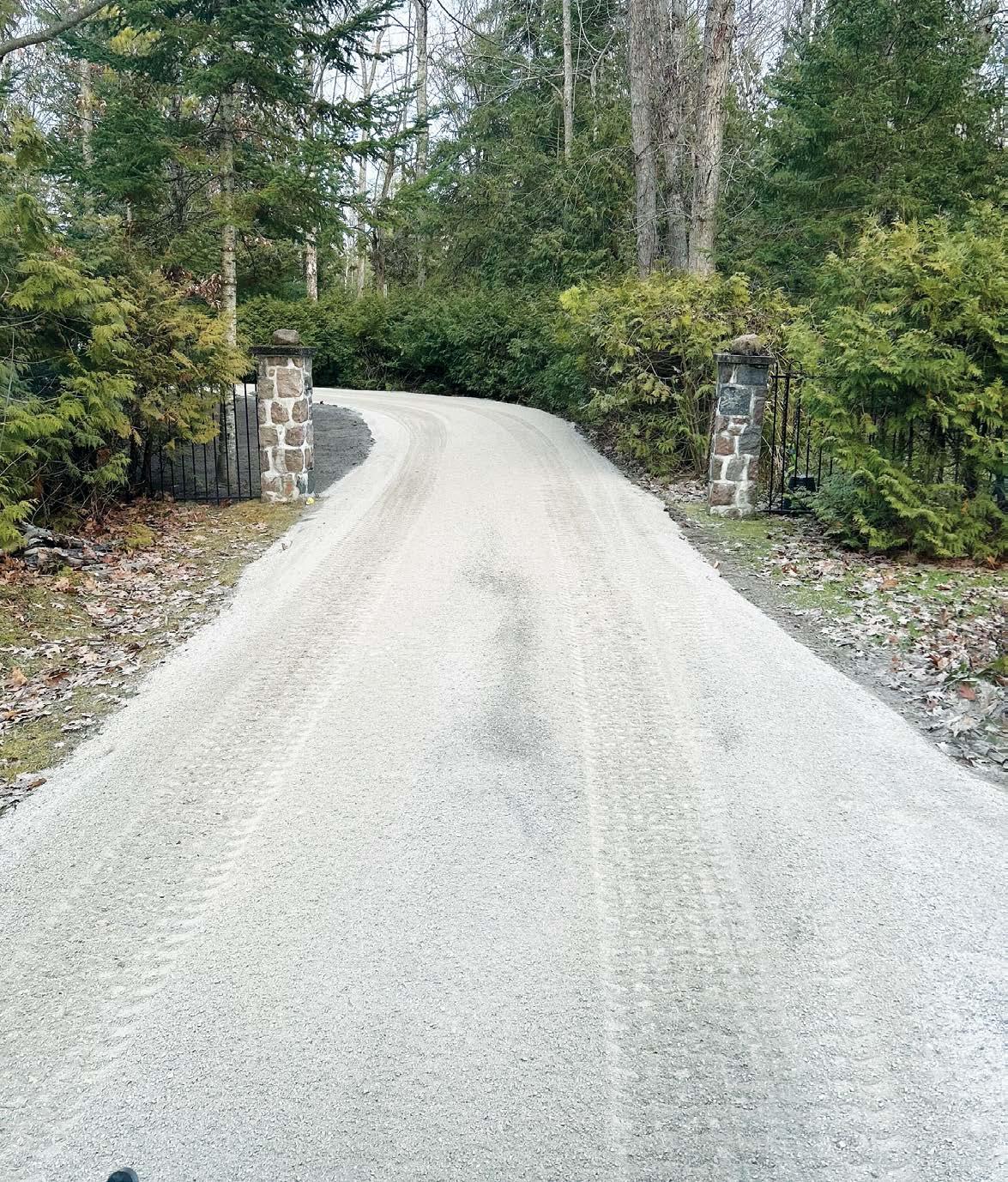
The birds are chirping, the sun is shining and Fisher Excavating is ready for your call.
Spring has sprung, and it is during this season of fresh and new that we all begin to plan a little. Plans for travel and fun throughout the summer, for sure - but also, plans for new projects and upgrades, as well as maintenance for enjoyment of your property. Perhaps the snow melted and you noticed a recession in your shoreline, or that stone patio and walkway you’ve been dreaming about is calling your name, maybe your private road is begging for grading; Fisher Excavating is licensed and ready to work for you!
Specializing in shoreline work and Armour Stone, Fisher is top of the line in expertise for their field. For Fisher, the job isn’t as simple as showing up and doing a good job. Dwaine and his team are a well-oiled planning machine. They begin by walking prospective clients through every aspect of the job, often with the assistance of digital imaging to show what your finished project may look like. For stonework, all the materials
are sourced and transported to Fishers shop location where the rock is meticulously measured and cut, piecing each angle together for the perfect fit. The stone is then transported to the job-site where all the appropriate groundwork has been laid, in preparation for the puzzle to be put together. Strategic planning is an absolute must when working with materials of such weight and magnitude.
If your planned project involves a boathouse and/or shoreline work, this requires a further field of expertise; one of the precarious balance between water and land. Dwaine Fisher understands local water levels and the ramifications of changes in those levels. He has an excellent working relationship with Trent-Severn Waterway and the Kawartha Region Conservation Authority, and understands their perspectives on shoreline conservation and habitat protection. This allows him to work with contractors and builders, lending his expertise in order to avoid problems which could prove disastrous down the road. For example, did you know there are rules in place which prohibit disruption of the water sediment during certain months based
on your area? With such a delicate equilibrium working on shorelines, Dwaine and his team consider details like these to be of the utmost importance when working with the environment.
Fisher Excavating also looks after all permits needed to complete your project, and says that these integral permits can take 4-6 months to obtain. So if you are considering shoreline work this winter, now is the time to plan.
Dredging and barge work are also on the list of services Dwaine Fisher and his team offer. Dredging, an excavation activity usually carried out underwater in shallow areas, gathers up bottom sediments. For folks experiencing an accumulation of sediment at the shoreline, dredging might make the place you usually dock your boat easier to access - with the help of Fisher you will be able to moor your vessel without worry.
Fisher Excavating takes great pride in making sure that every job is done to code, with permits, and within the limits of environmental law.
Fisher says,
“Every shoreline is unique, and requires careful thought and preparation. Our approach is distinctively different, let’s make your waterfront stand out.”
www.fisherexcavating.ca
705-878-6474
info@fisherexcavating.ca





Thinking about buying a home? Looking for great style and lots of features? Want a home that’s designed for your lifestyle? A home that is great to live in and “feels just right for you”? Then contact the Peterborough & The Kawarthas Home Builders Association (PKHBA). PKHBA can provide you a list of professional new home builders in your community and so you can discover what a brand new home has to offer.
“Today’s builders know that every customer is unique, and that everyone has different needs and preferences,”
says Jim Thomson, President of the Canadian Home Builders’ Association.
“That’s why a new home is a collaboration between you and your builder. Builders carefully select the designs and features they offer to their customers, and then together, you work out the details for your home. The result is a brand new home built for you.”
The selection of new homes has never been greater. Whether you are purchasing your first home or your next one, builders offer attractive options for everyone. Homes range from single family homes to townhouses, condominium apartments and lofts. Locations range from new suburban communities, urban infill developments or converted commercial buildings.
When it comes to style, layout, features and finishing touches, builders are giving free rein to great design. You will have no trouble
finding a home that reflects your preferences and way of living. At the same time, builders understand the importance of convenience -- functional layouts, easy work areas and low maintenance products.
No new home is complete without your personal touch. While builders’ practices vary, they all leave room for you to create the final look of your home. You choose the cabinets, flooring, tiles, lighting and other finishing components. You can add extra features such as fireplaces and mantels. In many cases, you can modify the floor plans, add windows or change the exterior cladding. When you buy a brand new home, you have the opportunity to get what you want, from the beginning.
And that’s just part of the picture. Just as important is what you cannot see, but will experience every day -- the comfort of energy -- efficient construction and systems, the freshness of your home thanks to ventilation and use of “clean-air” materials, and the abundance of natural light.
Buying a brand new home is a rewarding experience that also provides peace of mind. Behind every new home stands a team committed to customer satisfaction -- your builder, the manufacturers of brand-name building products and materials used in your home and the warranty company. You can enjoy your new home for years to come without worrying about repairs and replacements.
For more information on building a new home and hiring a contractor, www.pkhba.com/members

Michael J. Fox Said:
“Family is not an important thing, it is an everything.”

The Family behind Monaghan Lumber have proven that together, they have created a lasting legacy that serves the Peterborough area; lasting through not only changes in the years and calendar, but through changes in style, and innovation in the building supply market. This year marks 35 years of serving customers as
Brad Convery and his late brother Phil opened the doors of Monaghan Lumber in 1989 seeing the need for more selection in the market for building and home finishing options. Throughout the years the brothers worked hard to expand their offerings and

knowledge, and together they fostered the idea that whether it be a customer or employee, you treat everyone how you want to be treated.
As the years have passed the next generation has taken on leadership rolls and the boys say that watching the business grow alongside them since they were young children has been very motivating, and they are keen to continue the family business.
The team at Monaghan Lumber takes the utmost of pride in their expert knowledge of the products they carry. The staff offer honest, transparent information while supporting each and every customer so they can make the best choice for their project. They are constantly improving their education as product lines change and evolve in order to provide you with the newest designs and the best products with lasting quality. While styles change, one thing that has never changed at Monaghan is the consistency and quality of their product lines, they always aim to offer customers the best value. From trim, doors, windows, siding, flooring, rough lumber to power tools you will find it with your friends at Monaghan Lumber.
Monaghan Lumber brings you specialty lumber and finishing products you can’t find anywhere else in the Kawarthas. Proud suppliers of Canadian Made products such as Mirage Flooring, Lauzon Flooring, Alexandria Mouldings, Cape Cod, Maibec Siding, Canadian Made Stain options and more!
Stop by their showroom and let them show you what it’s like to be part of the Monaghan Lumber family.
Monaghan Lumber, creating a lasting legacy of expert service for the DIY’er in all of us!
Monaghan Lumber, 2129 Davis Rd., Cavan Monaghan (Peterborough)
Toll Free: 1-800-354-3195 Phone: 705-742-9353
www.monaghanlumber.com info@monaghanlumber.com
FB @monaghanlumber IG @monaghan_lumber
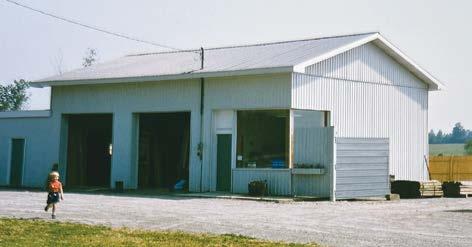






Walking across different areas of your property to get to the lake can trample vegetation, expose soil and increase erosion as well as runoff. The solution, depending on the slope of your shoreline property, is to install a pathway or a set of stairs.
If your slope is gentle or moderate, a pathway is often the best option. However, not all pathways are created equal! While it might seem a pathway that runs in a straight line from the cottage to the water is a good idea – it typically isn’t! This allows precipitation and all the contaminants it’s carrying (known as runoff) to go straight into the water. Instead, your pathway should meander, following gentle S-curve switchbacks. This will allow runoff to be captured by the surrounding vegetation where pollutants can be filtered, soil stabilized and flooding reduced.
It’s also important to cover your path with an appropriate material – which also depends on your slope. If you have a gentle slope you can use pine needles and leaves, wood chips and crushed gravel, or erosion control mix (mulch made of partially composted bark,
sand, gravel, stone and wood fragments). If you have a moderate slope, it’s best to use wood chips and crushed gravel or erosion control mix.
If the slope to the lake is steep, stairs are the better option. But again, some stairs are better than others! Stairs that are raised off the ground, have tread boards that are spaced about 2.5 cm apart and have open backs (no risers) are your best bet! This will let sunlight and rain reach the vegetation below, vegetation that will capture some of the runoff helping reduce the amount of water and contaminants that reach the lake and helping to protect against erosion. Landing areas can also be added – a spot to take a little rest and enjoy the view!
For more information on how you can show your lake some love, visit LoveYourLake.ca. Love Your Lake is a shoreline assessment program developed by the Canadian Wildlife Federation and Watersheds Canada.
Written by Terri-Lee Reid, Freshwater Researcher with the Canadian Wildlife Federation
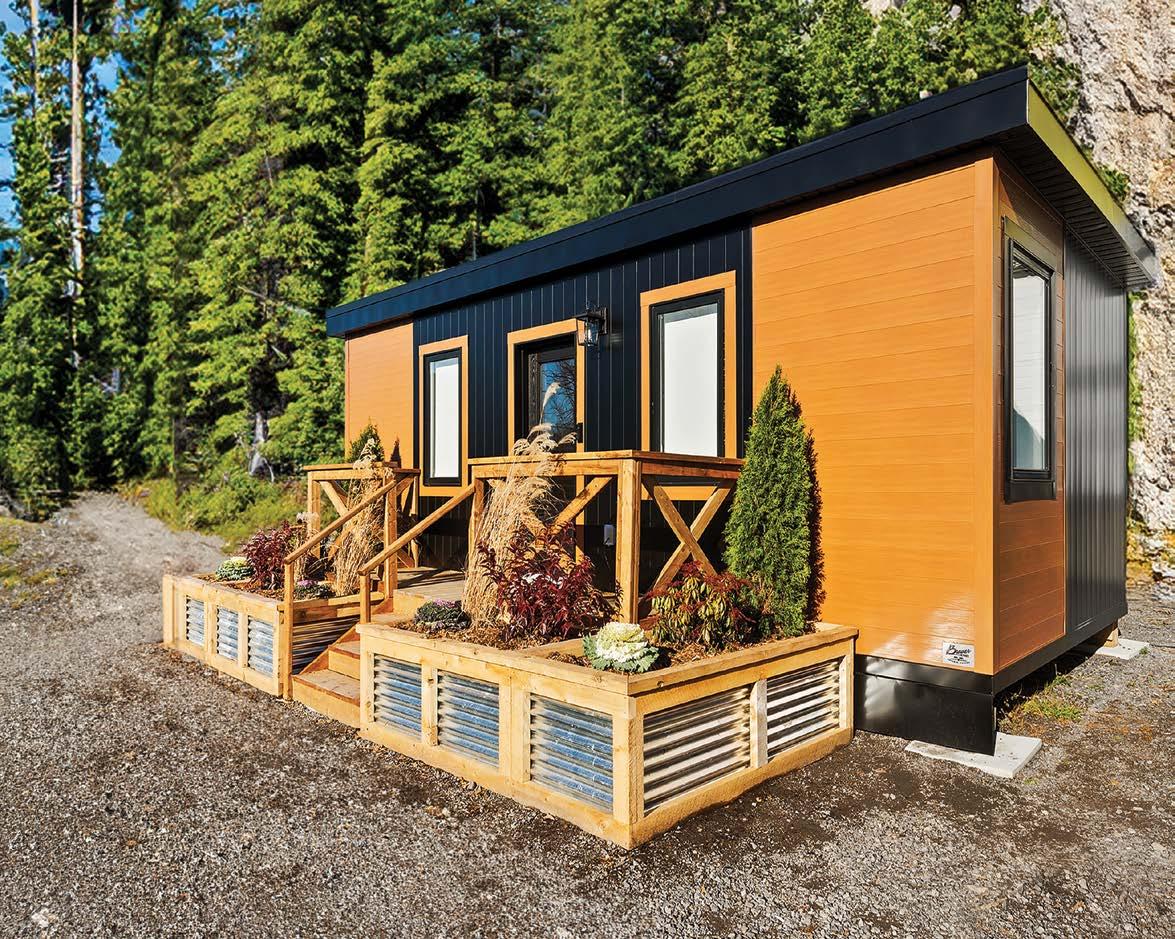
With the housing affordability crisis at its current height many Canadians are feeling the pinch, is the entry level housing on the market even attainable? With young people heading into the housing market with student debt, and the older generation retiring on less, affordable housing has never been more of a commodity.
Business owner Jamie Brauer, head of Brauer Homes has been building custom homes since 1990. Over the years, building in subdivisions he saw the immediate need for attainable housing especially as the price tag for a first time home soared. Brauer Homes has been constructing and renovating homes in the Prince Edward County, Belleville and the Quinte area for over 30 years, and in 2023 brought to the table the inclusive idea of Pod Living.
Sometimes saving that 10% - 20% deposit required to purchase a home, makes it extremely difficult to enter the housing market. For many young adults the idea of owning a home is just a dream.
That’s where Jamie’s idea of the Brauer Living Pods was born. The Living Pod is meant to be affordable, and Brauer’s goal is to assist people of many demographics realize homeownership.
When I spoke to Jamie, his passion for living equality shone like a beacon of hope. He explained his mindset on family and generational equity - how so many families are forced to help their grown children to purchase a first home, leaving them precariously balanced for their own future. Jamie said
“I see the immediate need for affordable housing, and I wanted to create a product with dignity.”
Brauer Living Pods are a small home built with big home technology. As a high-end builder Brauer brought his attention for detail to every feature that makes their genius Living Pod special. The Brauer
Pod is a fully functional year-round accessory dwelling built for living in the extremes of the Canadian climate. Every element of the Living Pod is built exactly as it would be for a custom home build, just on a smaller scale, including HVAC, plumbing and electrical.
Each Pod is skillfully designed to make the most of each space, but Jamie said it was important to make the small space feel big, open and not cramped like some tiny home living can be. The Brauer Living Pods are perfectly outfitted with a full sized designer kitchen, appliances, and a bathroom complete with 60-inch shower. Stacking laundry is also thoughtfully included in the Pod. In a one bedroom Pod you have a living room and dining area, plus space for a fold down hide-a-bed in the living room if additional sleeping area is needed. Each unit also comes with a deck and garden boxes for the cutest curb appeal - grow your own vegetables right outside your front door - seeds and soil included!
Brauer Living Pods are efficiently clad in metal siding and have a commercial raised seam steel roof. They come completely insulated with spray foam in floors, walls and ceiling. Built to last, the Brauer Living Pods use the highest quality materials ensuring minimal maintenance while still keeping the cost affordable.
Light shining in the windows makes this cheerful space feel homey, and inviting. Even the curb appeal of these pods has been thoughtfully curated. Walking into a Brauer Living Pod is like walking into a high-end custom home, but with a price tag we all dream about - starting in the $150K’s.
Installation takes five days from delivery to move-in ready. After your site is assessed, it’s prepared, The Pod is lifted onto engineered foundation piles with beam catch brackets, bolted in place, and connected to services (water, electrical and sewer/septic).
Whether you are envisioning a new home for yourself, or an accessory dwelling as income potential - think Airbnb or short/long-term rental - or if you need more space for a studio, home office or bunkie, a Brauer Living Pod is the easy, affordable option right in your own backyard.
Affordable. Sustainable. Comfortable. Call Brauer Homes today and take the next step into your high-end build on a small scale. Brauer Living Pods are located in Belleville and ready to be toured by appointment.
www.brauerhomes.ca
(613) 921-0042






Buying or Selling a home or cottage can be a stressful process if you don’t have the right real estate agent. Let me show you the difference of working with a local professional agent can make. 705.868.4239




The cottage porch possesses an innate ability to evoke feelings of nostalgia, tranquility, and simple joys. Nestled amidst quaint surroundings, it serves as a welcoming threshold, bridging the gap between the interior comforts of home and the natural world outside. It is our family's favourite spot to relax.
Repurposed barn beams add rustic charm to our porch. Sunspace’s WallsUnder system combines a tempered glass fall barrier with WeatherMaster 4 Track venting windows to provide modern comfort and uninterrupted views. This design combination blends past and present. The beams speak of a bygone era when life moved at a slower pace while Sunspace WeatherMaster products offer modern protection against insects and inclement weather. Our enclosed porch provides a sanctuary free from bothersome bugs and harsh elements, allowing us to bask in the fresh air without sacrificing creature comforts. This barrier allows for uninterrupted outdoor relaxation especially during the evening hours when persistent

mosquitoes usually drive us indoors.
Our family loves to snooze in our screened porch. Its ability to seamlessly merge the comforts of indoor living with the refreshing ambiance and restorative powers of the great outdoors makes it the perfect place to grab a blanket and nestle in for a relaxing night's sleep or a leisurely daytime nap. The gentle rustle of leaves and the distant chirping of crickets serve as a familiar lullaby, allowing us to drift off to sleep amidst the tranquil sounds of the natural world. From the soothing sounds of nature to the panoramic views of the night sky, slumbering in our screened porch provides a tranquil retreat that awakens our senses and rejuvenates the soul. A screen porch is the perfect sanctuary for those who dare to dream under the stars.
Looking to enclose your porch or veranda? We can help you! Call Nortech Home Improvements at 705-738-0304 to get your free quote.


As the winter frost begins to thaw and the landscape transforms into a vibrant tapestry of blossoming flowers and budding trees, Canadians eagerly welcome the arrival of spring. With longer days and warmer temperatures on the horizon, it's the perfect time to infuse your home with the spirit of the season. Embrace the freshness of springtime in Canada with a few quickread tips that will rejuvenate your living space and celebrate the beauty of the great outdoors.
Natural Elements: Incorporate natural elements into your home to echo the awakening of nature. Opt for furniture with wooden details, woven baskets, and stone accents to bring the outdoors inside. Consider adding a statement piece such as a wooden dining table, or a textured porcelain backsplash to add timeless character to your space.
Soft Textures: Swap out heavy winter textiles for lighter, airy fabrics that evoke a sense of freshness and renewal. Replace thick blankets and wool throws with lightweight linens and cottons in softer hues or subtle patterns. Add throw

pillows and area rugs with soft textures cotton or velvet to create cozy nooks for relaxation.
Seasonal Decor: Springtime is the ultimate time to take advantage of all of the beautiful twigs, sprigs and sprouts that cover the landscape seemingly overnight. Freshly budding tree branches are a beautiful way to bring an architectural component to your centrepiece, and even a single earlyspring flower such as daffodils or a tulip are impactful in a simple vase. For a longer-term plan, potted plants bring a natural burst of colour and life; and filter the air in your home, win win!
Continued on page 24

Open Spaces: Embrace the sense of openness and freedom that comes with spring by decluttering and creating spacious, airy interiors. Clear out unnecessary clutter (a professional organizer is a fantastic investment!), and donate items that no longer bring you joy. Consider opening up windows and doors to let in natural light and fresh air, connecting your home to the rejuvenating energy of the outdoors.
Outdoor Living Spaces: Once the weather is consistently nice, extend your living space outdoors and embrace the beauty of springtime in Canada by creating an inviting outdoor oasis. Set up a cozy seating area on your patio or deck with comfortable furniture and plush cushions. Add ambient lighting with string lights or lanterns to create a magical atmosphere for al fresco dining and entertaining. If you provide the main dish, invite some friends to bring an easy side dish or appetizer they've been loving lately and enjoy a fun and easy potluck!
Sustainable Design: Embrace sustainable design practices that honour our environment and reduce your carbon footprint. Choose eco-friendly materials such as organic textiles, recyclable materials, and up-cycled or vintage decor (so many amazing vintage stores in Ontario!) to create a home that you feel great in, and reflects responsible living. These pieces are always a great conversation starter, and create a curated vibe.
Personal Touches: Finally, don't forget to infuse your home with personal touches that reflect your unique style and personality. Display cherished mementos, family photos, or decor that bring joy and meaning to your space. Create a cozy reading nook with a comfortable armchair and a stack of your favourite books, or showcase your hobbies and interests with curated collections and displays.
Incorporating these inspirations will help you embrace the freshness of springtime in Canada and create a home that reflects the beauty of the season. From natural elements and soft textures to colourful accents and seasonal organic decor, enjoy infusing your living space with the spirit of renewal and rejuvenation that comes with the arrival of spring.

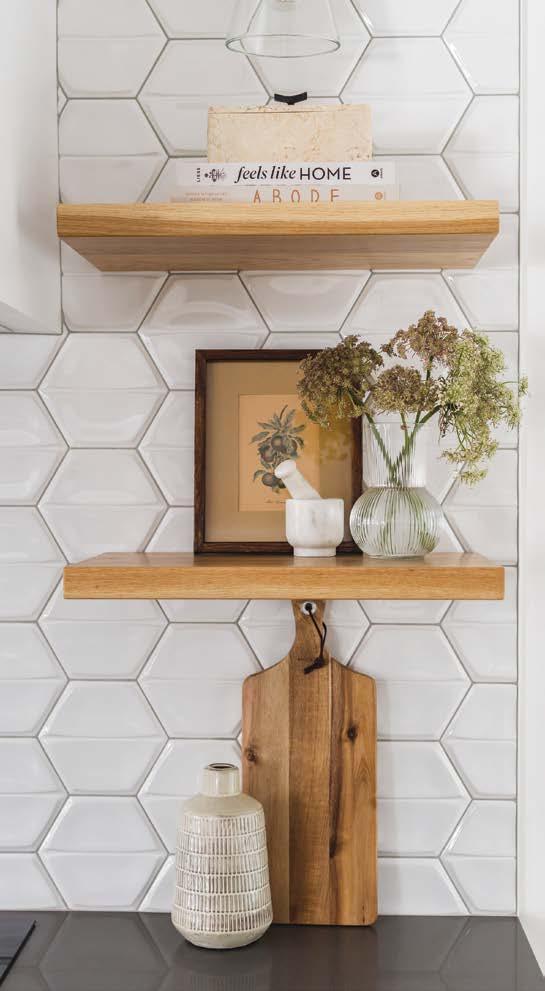
Birchview Design Inc. is an award-winning interior design team serving clientele in the Kawartha Lakes, GTA, and beyond. As a full-service design + project management studio, the firm offers an all-inclusive, simplified experience with elevated design expertise and elite project management.
www.birchviewdesign.com
Design + Project Management: Birchview Design Inc. @birchviewdesign
Photography: Ashley Adams @flashadams


What screams spring is here more than Maple Syrup! As a child I have fond memories of spending Easter at a family Sugar Bush. Sticky sweet syrup over the fluffiest of pancakes - or my personal favourite, a little breakfast sausage dipped in the sweet stuff. *chefs kiss*

Here at the magazine we have linked up with Maple Syrup Family the Staples, who are well-known in our area for providing many locals with the best Maple Syrup one could ask for. Jill Staples told us that this is the earliest they have seen the sap run - January 30th 2024 to be exact! Generally sap begins to run with the warmer weather of February and sometimes into March. What a sweet start for 2024!
Jill also gave me the lowdown on the basics of making sweet maple magic.
First you need to tap the maple trees with a spile and bucket to collect the sap. Once you have collected enough sap to boil, then the work of boiling it down to syrup begins. Jill warns that this is an outdoor job; if you boil down in the kitchen, everything will become sticky. Choose an outdoor boiler, or BBQ and big pot. It takes 40 litres of sap to make 1 litre of syrup, and about 4-6 hours of boiling. Be sure not to boil too hard or long, as the syrup will boil over or burn! Finished product is when the syrup is 7 degrees above the boiling point of water or a density of 66. Be sure to bottle the finished product hot (180 degrees), or store in the fridge or freezer to keep from spoiling.
These are the basics of making maple syrup on a small scale, the Staples on the other hand produce on a large scale. They have 3500 taps which produces approx. 3500 litres of delicious syrup per year. They have a fully automated system of pipeline with monitors that send alerts to their phone if trouble arises, and it is boiled on a 4×14 evaporator, then hot packed at 180 degrees requiring all hands on deck for the family during the busy season.
Staples Maple Syrup is a family run business based out of Cavan, Ontario. You can find Staples award winning syrup in local grocery stores, Kyoto Coffee, and gift shops, and also at the Peterborough Farmers Market every week.
Be sure to follow them on Facebook and Instagram www.staples-maple-syrup.myshopify.com
439 Highway 7A, Cavan

I took a peek through a small opening crack in the door and saw the church was quite full of friends and relatives. I could hear the organ playing softly as I paced back and forth in the small anti room. Earlier I had nicked my neck shaving and a small red dot was visible on my starched white collar, I was sure everyone noticed it like they would a pimple on a smooth face. I continually adjusted my brand new $19.00 blue suit I had purchased for the wedding; half a week’s pay. After a few nervous minutes, Len, my brother and best man and I were ushered into the church.
A smile creased Reverend Watt’s face as we took our designated places, he gave a slight nod and all of a sudden the organ boomed out the familiar wedding march
And there she was coming down the aisle on her father’s arm. It was for real, I was getting married.
She was dressed in a long white gown with a white train and halo-like silk surrounding her face, a wedding gown her grandfather generously supplied. She cradled a large bouquet of flowers, I had never seen anyone so beautiful in my entire life and in a few minutes Catherine Marie Beveridge, that girl “Kay”, would be my wife.
Yes, it was March 27, 1954, seventy years ago but when I close my eyes the years fly backwards like a rewound film and the decades of blood, sweat, happiness and tears seem like only a few years gone by.
I turned nineteen on December 21st and Kay had her eighteenth birthday the following February 6th so of course we were told we were too young to get married. I worked at Wonder Bakeries earning thirty eight fifty a week, I had nothing to offer Kay other than myself and my wife had nothing to offer me but herself, we knew the difference between lust and love and when we took our vows, it was through love and love alone, a love we still share after all these years.

Two years later we were blessed with our first of two sons; two boys who got into every bit of trouble and boyhood injuries, yet displayed so much love and family devotion that has made us forever proud.
My Dad gave me two pieces of advice, one was to never pay more in rent than you earn per week and the other was to accept the responsibilities of a wife and pending family so when things get rough, don’t come running home like a beaten child.
Our first apartment was a cute one bedroom, we were paying fifty dollars a month rent which proved my Dad was right. When the other salesmen stopped for morning coffee I rarely did because coffee cost a dime, something I usually didn’t have.
As my wages inched upward our thoughts turned to owning our own home and that dream came alive when we purchased a two bedroom cottage on a country setting for the princely sum of $8500., no money down, fifty eight dollars a month.
The good ‘ol days, life was so simple back then.
Russ Sanders epigram@nexicom.net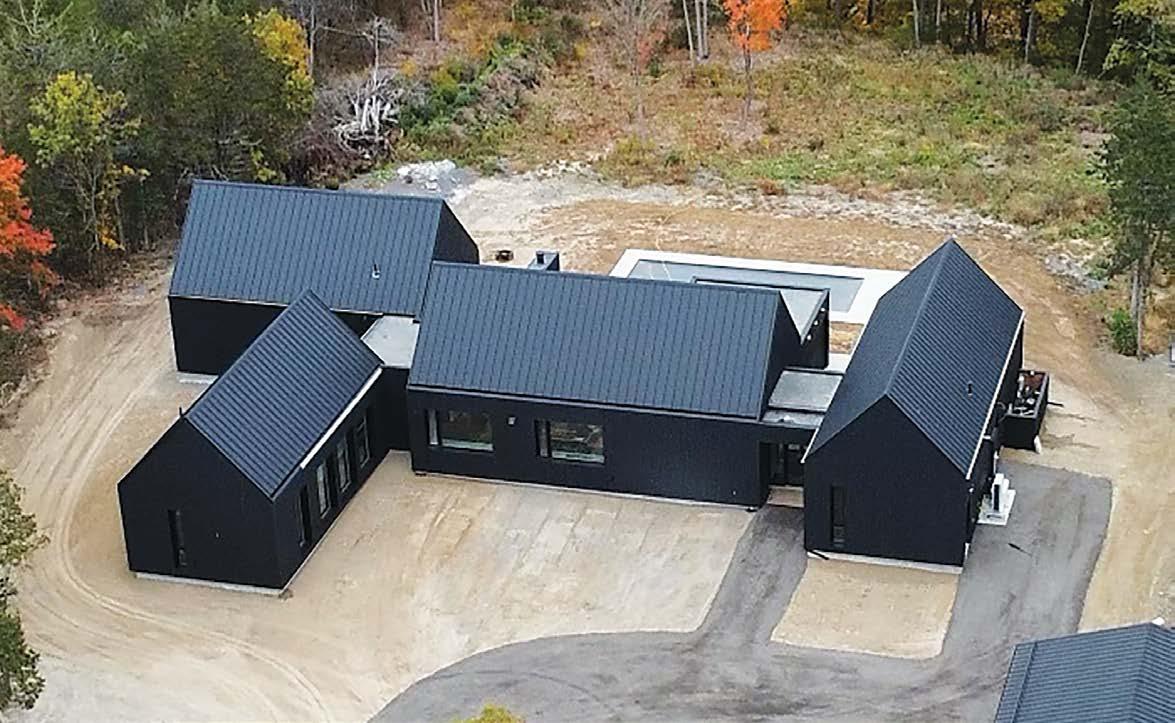
Building your own custom home or cottage is an exciting process filled with a multitude of decisions that range from the type of framing to smaller details like the colour of your light switch covers. Each choice you make adds a personal touch, transforming your dream build into a reality.
As you begin planning, you might already have some idea of the size and layout for your project. However, an essential step in the planning phase is understanding the different framing types available to you on the market. Working closely with your architect and contractor, you will navigate through different framing options, each with its own set of advantages and challenges.
To help get you started, here are three common framing types that we see being used across the industry:

A popular choice, wood framing uses dimensional lumber and plywood sheathing to create the structure of the home. Wood frame construction is often used in suburban neighbourhoods and urban developments due to its versatility and cost-effectiveness.
• Pros – Affordable, widely available materials; flexible design options; eco-friendly as wood is a renewable resource.
• Cons – Vulnerable to rot, pests, and fire if proper construction methods and materials aren’t used.
This method requires a higher carpentry skill level with knowledge of traditional timber framing techniques. Large wooden beams are interlocked to form the structure, leaving these beams exposed inside for a striking aesthetic. Timber frame construction is often used in picturesque cottages, and custom-built homes, giving them a timeless charm that feels both rustic and elegant.
• Pros – Long-lasting, great insulation properties; environmentally friendly with wood as a renewable source.
• Cons – Higher cost, demands skilled craftsmanship; potential for rot, pests, and fire if neglected or not properly maintained.
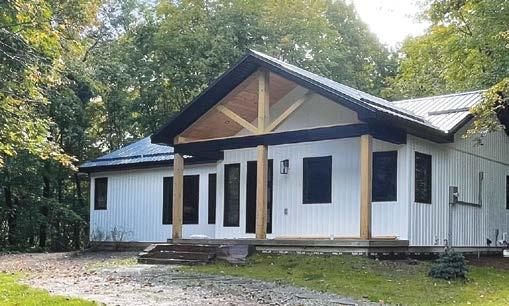
Typically used for commercial buildings, steel framing is becoming more popular in residential builds, particularly for contemporary homes that feature large, open spaces, and require strong, slim frames that wood can't provide. Steel frame construction involves creating a frame of steel posts, beams, and girders which are then bolted or welded together. It requires the knowledge and expertise of skilled fabricators with immense experience in metalwork.
• Pros – Strong and durable, resistant to pests and fire; offers excellent stability.
• Cons – Higher initial costs; thermal conductivity requires substantial insulation.
While these three framing styles are popular, they are just the tip of the iceberg when it comes to custom built homes and cottages. Other framing options like masonry, concrete, straw bale, and prefabricated structures each offer their own unique benefits. Even a hybrid approach might be the right direction for your one-of-a-kind build.
Building a custom home or cottage is a partnership—a collaboration between you, your architect, and your contractor.

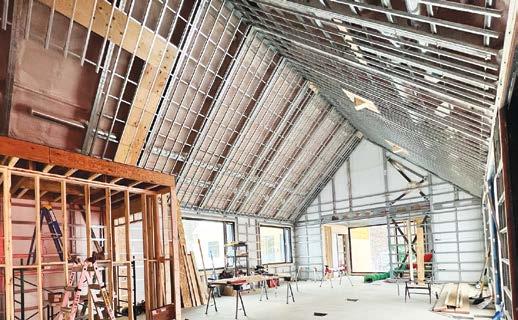
Clear communication and careful decision-making are important as you work through the myriad of choices involved in the construction process. What's the end goal? A sturdy, well-built home or cottage that reflects your personal taste and meets your lifestyle needs.
At Turnkey Construction, we see ourselves as more than just a construction management service. We're your partners in turning your build dreams into reality, guiding you through every step from initial planning to the final touches.
Learn more about how we can help bring your vision to life at www.turnkeyconstruct.ca or get in touch with Stu Shedden directly at 705-930-5220 or sshedden@turnkeyconstruct.ca



1. Canada has one of the most diverse natural environments on the planet, including over 1 million bodies of water. With such an abundance of opportunity, it only makes sense to introduce children to a watersport like fishing.
2. The natural resources we have access to in Canada are threatened by pollution, un-checked development, neglect and climate change. Research has shown that anglers often become ardent conservationists. In fact, a recent paper co-authored by the Biology and Institute of Environmental and Interdisciplinary Science at Carleton University, states that “outdoor recreation inspires strong emotional responses in people, leading to advocacy for ecosystemscale conservation.” The simple act of fishing leads to an increased commitment to the environment.
3. Fishing has proven mental health benefits. It has been used to reduce the symptoms of PTSD, and a recent study out of the UK showed that individuals who regularly went fishing were almost 17% less likely to report being diagnosed with mental health conditions. Fishing is a great way to practice mindfulness and create a sense of belonging and accomplishment for youth who might be struggling.
4. When you’re casting a line, you can’t be looking at your phone. We all know that social media plays a big role in the lives of children. And while there can be some perks, it’s always a good idea to offer opportunities to disconnect. Being out in nature, with friends or family, is a great opportunity to do just that.
5. There are many affordable fishing programs and events to help kids get started. In addition to free and almost-free fishing derbies throughout the region all season long, there are also great programs like the Ontario Federation of Anglers and Hunters Tackle Share initiative. Anglers simply sign out a rod and reel, as well as an assortment of tackle, in the same way that they would borrow library book. The Ontario Ministry of Natural Resources and Forestry also offers Learn to Fish, a free program that teaches new anglers how to fish in Ontario. This 2–hour program combines a practical teaching session with supervised hands-on fishing. They also have an online version! And if you want to get started immediately, order a free ‘how-to’ booklet called Catch Fishing from the Canadian National Sportfishing Foundation by emailing info@catchfishing.com.
For recreational fishing news and industry information, visit www.keepcanadafishing.com. To learn more about Tackle Share, visit www.tackleshare.com. To Learn more about Learn to Fish visit www.ontario.ca/page/learn-fish.
The MacDonald family welcomes you to 3333 Hwy 7 Norwood, where they have curated the most colourful, blissful, pick your own flower farm. To witness the dazzling blooms as the sun sets behind row upon row of luscious dahlias, zinnias, straw flowers and sunflowers (to name only few) is something out of the movies; brilliant pinks, yellows and luscious neutral tones all blooming at once are a true treat for the senses.
Claudia MacDonald and her husband Ben along with their 3 kids had dreamed of owning a farm, and in June of 2021 their dream came true with the purchase of 96 acres. The main purpose for the land was to raise sustainable grass-fed cattle and have a farm store, they called it Heritage Cattle Co.
Claudia, an artistic soul and avid painter, wanted to bring beauty to the farm; something that would compliment what they already had - but mainly something that would exercise her creativity.
When Covid hit and Claudia found herself homeschooling her kids, she knew she needed to create beauty. That’s where the flowers came into play, she started them indoors (with no greenhouse to speak of) and as a family they built 12 no-till flower beds.
“I’ve never been known to have a green thumb, but I have a school background in Biology and a love for nature and pretty things.” Says Claudia.
As with their farming practices it was important to refrain from using harsh chemicals and synthetic fertilizers. Cardboard, good soil, rainwater, organic compost to replenish nutrients, chickens to aerate and fertilize, and honeybees to pollinate are the powers behind the blooms.
Summer one arrived and they had so many flowers that they couldn’t keep up with them! Not wanting the blooms to go to waste, the farm opened to the public and Heritage Blooms U Pick was born.
“That summer, we saw how much people were craving connection with nature and coming to the farm. People smiled when they were in the gardens. It all made sense…” says Claudia.
This summer the MacDonalds invite you to join them on the farm with plans on running their arranged bouquet roadside stand beginning in July, and opening the gardens for U pick for the month of August. Flowers can be picked by the bucket, or by the cupand you are encouraged to bring your own bucket for transport home.
On evenings when the gardens are not open for picking, photographers are welcome to book photo sessions amongst the magical blossoms.
For more information visit: www.heritagebloomsupick.com
“The earth laughs in flowers.”
- Ralph Waldo Emerson


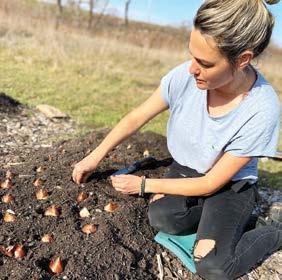


As designers we believe that accessories can make or break any room. The right accessories can add visual interest and style to any space, help tell your story, and contribute to the overall ambiance of your home. Trendy accessories can bring a dated dwelling into the modern era. The right home accents instantly can bring any room to life.
While accessories are a necessary finishing touch in every successful interior, it's a fine line between "done" and "overdone." Here are some of our tips for maximizing the power of your accessories, without going too far.
If you're decorating a room from scratch, we advise to consider going neutral with your larger selections such as flooring, cabinetry and large-scale soft seating furnishings. These expensive items will have a longer shelf life in neutral form, and leaves lots of room to play with colour, patterns, texture and materials in your accessories, which are far less expensive and easy to change seasonally or on a whim.
By Eugenia TriandosIf you're looking now to refresh and re-style a room or your entire house the first step we suggest is to remove all the "extras." The tabletop decor, the collectables and the books, photos. Now, stand back and look at the room as a blank canvas. Many people actually feel liberated after the de-cluttering process, and come to appreciate the "less is more" philosophy. Simplicity makes room for the important things in life; keep it simple, but significant is what we believe when looking to go minimalist.
I like to begin to dress your space with the right textiles. Have fun with rugs and window coverings, pillows and upholstery. Experiment with colour, pattern and different materials and mix them up to bring dimension to your interiors. These are the elements that you may decide to change in a few years that can give you an entirely different look while not having to reinvest in the larger pieces of furniture.
Look over the items you collected in your home and ask do you love them? Does it bring me joy? Does it have a place in my new space? If
you answered "yes" to all three then keep and work into the space.
Your collection of accessories will likely be a combination of cherished old favourites and some fabulous new finds. This approach to accessorizing a home creates an interior aesthetic that's as unique as its owner. Layer these in one at a time. Be selective and be considerate of your greater overall aesthetic goals.
Start with the items that are not only decorative but useful. Kitchens are a great place to display cutting boards, pitchers, decanters, even wooden spoons can add to the overall decor, yet they are all items that could and should be used. Same goes for your decorative shelving.
Designer Tip: Set a visual theme by pairing accessories with decorative items. For example, rattan chairs, light wood, white tropical prints and organic textiles create a relaxed, approachable, beachy vibe.
The aesthetics we create are an accumulation of seemingly small decor influences. Our goal is to amplify these quieter, creative moments for you. These finishing touches truly reflect our individuality and shape the personality of our homes. Accessorizing is the part that most of our clients are happy to hand off. They usually don’t know where to start, what to buy we realize that this can be a daunting task for many which is why we opened Hibou Home. Our online shop offers a wide range of our favourite accessories and home goods that we use on our projects. Curated so you can quickly shop the look or browse a specific category to complete the decor of your own home and create a finished space you can call home.


Designer Eugenia Triandos, is the Principal Designer for Montreal based Hibou Design & Co. This multi-disciplinary design firm has become known for creating interiors that are both uniquely reflective and functional. The firm provides bespoke residential design services throughout Ontario, Montreal, & North America. www.hiboudesignco.com




With spring here many of us start to plan upgrades to our home to take place in the warmer weather after the hibernation of winter has eased.
There are several upgrades that will affect not only the look of your home, the efficiency for heating and cooling, but also - your homes value. This value builder is simple, replace old drafty windows and doors. These easy upgrades to the exterior of your home will boost your curb appeal, save you money on your heating bill and have your neighbours jealous of your home makeover.
Lifestyle Home Products offers a streamlined service when it comes to taking the first step to upgrade your windows and doors. Their knowledgeable staff come right to your home, assess your current window and door situation, measure, and give you a quote right on the spot.
Lifestyle Home Products’ vinyl replacement windows are created to the highest standards at their factory in Peterborough, Ontario. These premium-quality vinyl windows are harmonized tested and certified by thirdparty organizations, including ENERGY
STAR® and the Canadian Standards Association (CSA), to ensure you receive high-performance products that are built to last. Lifestyle is able to provide Canadianmade replacement windows at factory-direct pricing because they manufacture their own products - no middle man.
They provide window options in single and double hung windows, casement windows, awning windows, bay & bow style windows and picture windows. The perfect window for every room in your home.
Your exterior door is an integral part of the security of your home, and a major statement feature for your entryway. Lifestyle doors offer a balanced combination of the highlevel protection provided by conventional security doors and the elegance of popular, custom-designed doors. All of Lifestyle’s premium doors feature a foam-injected core, and they are available in a variety of attractive designs. You can also choose from either a durable steel skin for higher R-value and wear-resistance or a dent-resistant fibreglass skin that mimics the look of wood.
Lifestyle exterior doors and door systems
are also custom designed and fabricated in Lifefstyles local Peterborough plant. Made specifically for our Canadian climate, to be the most secure, weatherproof, and attractive entry doors on the market, Lifestyle door systems are unmatched in the industry.
Visit LifestyleHomeProducts.ca or call 1-800-465-0593 for your free, in-home estimate.


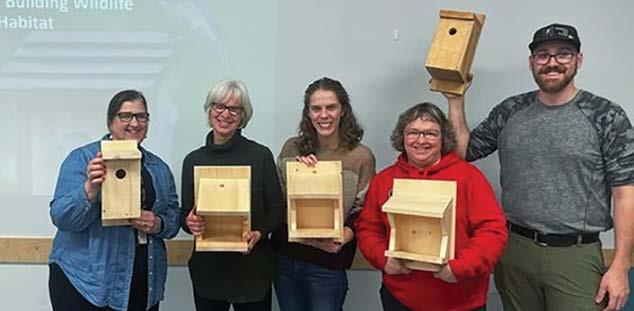
As the blanket of winter recedes, it is crucial to consider the welfare of our feathered friends who, just like us, are eagerly awaiting for spring!
The Bird Friendly Peterborough group, dedicated to promoting the wellbeing of local bird populations, provides valuable recommendations for ensuring bird safety, and winter is the perfect time to start planning your own bird-friendly actions this year.
Starting March 31, 2024, Bird Friendly Peterborough is launching the 'Bird Friendly Peterborough HEROES Program', delivering bird-safe education as well as implementing projects and activities that align with the certification standards for a Bird Friendly City. The 'Bird Friendly HERO Program’ will focus on downtown areas of Peterborough and Lindsay (where there are many fatalities due to window collisions).
We will do a callout for individuals/organizations in the downtown core of both communities who would be interested in a formal process for certifying their homes/businesses as bird friendly. Interested individuals/ organizations would begin certification by engaging with a suite of short, engaging virtual modules, the purpose to provide an overview of birds, habitat ad environmental pressures. These modules end with a facilitated project planning session facilitated by the program where a small budget is drawn up, including in-kind contribution from the Bird Friendly HERO program. We have created our local certification criteria and forms, which are available on the Bird Friendly Peterborough website (www.birdfriendlypeterborough.ca). Once the form is completed, it is submitted to the project Steering Committee for review.
Now is the perfect time to build habitat boxes for birds and install them before the spring migrants return. Building bird nest boxes offers a multitude of benefits for both bird enthusiasts and the avian residents of our surroundings. These carefully crafted structures provide a safe and secure place for birds to nest, offering protection against predators and the elements. Constructing bird nest boxes also encourages local bird populations to thrive, contributing to the overall health and balance of ecosystems. To make a bird nest box, one should choose appropriate materials such as untreated wood, following recommended dimensions to accommodate specific bird species. It's crucial to include features like proper ventilation, drainage holes, and easily accessible entry points. Installing the nest box in a suitable location, away from predators and at the right height, ensures its effectiveness.
For a selection of terrific plans for creating your own next box, visit Nest Watch, published by the Cornell Lab of Ornithology.
Through our efforts, we can create a welcoming and safe environment for our feathered friends. These measures not only support bird wellbeing, but also contribute to the larger goal of building sustainable wildlife habitats, ensuring the health and resilience of our local ecosystems. So, let's embrace a bird-friendly winter!
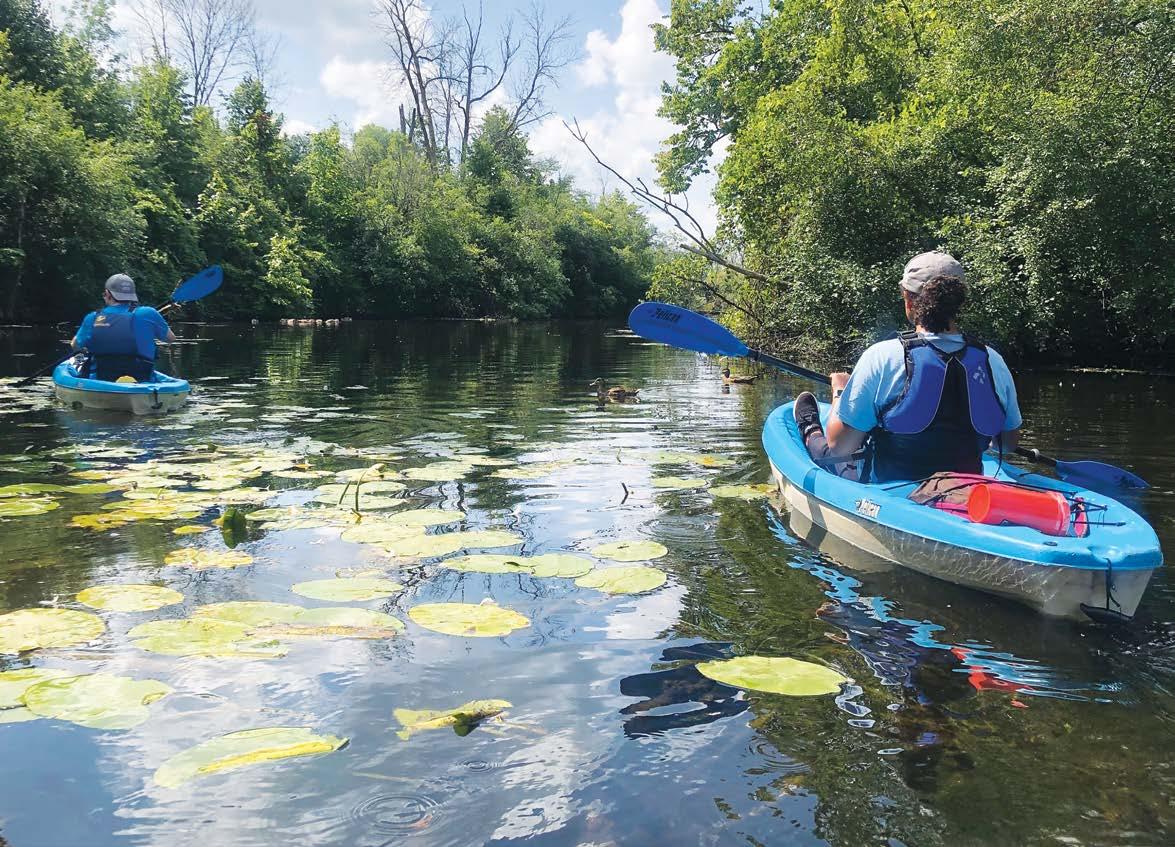
The young people of Peterborough are getting outside and giving back to their community through WILD Outside, the Canadian Wildlife Federation’s (CWF) award-winning, no-cost, youth program!
WILD Outside empowers young people ages 15 to 18 to engage in impactful service in the name of conservation, all while making friends and experiencing the great outdoors! WILD Outside was developed and delivered by CWF in Canadian cities coast to coast and is funded in part by the Government of Canada under the Canada Service Corps program.
A day with WILD Outside could include tree-planting, canoeing, bird banding, hiking, pollinator garden building, park cleanups, invasive species removal and more! Hours spent with WILD Outside can be used for school-required volunteer service hours and added to resumes. Upcoming Peterborough events to look forward to this spring include the City Nature Challenge, April 26 to 29th, and the Shoreline Cleanup on Earth Day Weekend!
So far 2,027 WILD Outside participants have contributed over 64,000 service hours across Canada, completing over 750 service projects to better their local communities. With the program’s flexible schedule and no cost to participate, WILD Outside is the perfect place for any young person interested in getting outside, having fun, making friends, and serving their community, regardless of previous experience or skill level.
The Canadian Wildlife Federation is dedicated to fostering awareness and appreciation of our natural world. By spreading knowledge of human impacts on the environment, sponsoring research, promoting the sustainable use of natural resources, recommending legislative changes, and cooperating with likeminded partners, CWF encourages a future in which Canadians can live in harmony with nature. For more information, please contact Peterborough’s WILD Outside Youth Leadership Specialist, Morgan Tompkins at morgant@cwf-fcf.org.


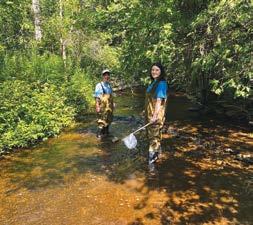





For most people, spring is for anticipating another summer of fun.

Hit
But it’s also when those with winter equipment like snowblowers “summerize” it. Same goes for sleds and trailers owned by thousands of snowmobilers throughout the Kawarthas, Bancroft & Haliburton regions. Many call their dealer. Handy folks do it themselves.
But some don’t do it at all, much to their later regret.
Why bother summerizing you might ask? One reason is to avoid premature deterioration resulting in unnecessary repairs or breakdowns. Another is to prolong functional lifespan as long as possible. And finally, to store it properly for next winter. Here’s what snowmobilers need to do.
Sled Summerizing Start by power-washing everything to remove accumulated dirt, grime, crude and grease. This is also an opportunity to deal with new marks on the finish. Next, inspect all visible parts under hood and undercarriage, repairing or replacing anything broken or showing undue wear & tear. Then clean the brake and clutch, change or top up fluids, do a grease and lube, and replace belt and spark plugs as needed.
Your sled’s going to sit unused for months, so use a protective spray to prevent storage damage. Also, add fuel stabilizer to a full fuel tank, running the engine for several minutes to flow stabilized fuel through it. Follow up by spraying your engine with fogging oil to prevent corrosion or gumming up its parts, remove the belt to take pressure off the clutches, and take out the battery (use a trickle charger to prevent power drainage).
Consider blocking exhaust outlet, air intake and other openings with steel wool to keep out nesting varmints – and place a few mothballs

under the hood. Finally, release track tension, take weight off suspension with a snowmobile lift or blocks, and put on a storage cover (but never park in direct sun).
Trailer Summerizing Winter towing exposes your trailer to severe driving conditions, including snow, ice, slush and extreme cold. Plus, all kinds of salty, sandy road crud – and new corrosive enemy #1, antiicing brine.
What’s more, most winter roadways are frost heaved, pot-holed and irregular. They aggravate pre-existing mechanical issues and create new ones. Improper storage for several months only makes matters worse. And while the summerizing process for trailers is much the same as for sleds, here are some key pointers…
After cleaning the entire exterior and interior, do a careful inspection underneath, including axles, springs and the backs of tires and rims. If your trailer has brakes, check and service them. Residual moisture in wheel bearings causes deterioration, so displace it by either pumping in a high-speed, lithium-based grease (matching the existing grease type) or repacking the bearings. At the same time, grease cam bars equipped with grease fittings.
Anti-icing road brine can be especially corrosive to the underside of trailers. That’s why some owners get their trailers professionally undercoated. At the least, apply anti-corrosion product to the entire under frame, especially joints and fittings, where metal components are in constant contact. Meanwhile, if your trailer has torsion axles, it’s smart to check axle bolts. Then inspect for corrosion and replace the gasket between the axle and frame if necessary. Finally, use a lightweight penetrating oil or rust protection lubricant spray on all hinges, locks, pivot points, including ski clamps and D rings. Also, spray items like the tongue, tongue jack, safety chains and coupler – and don’t forget the trailer hitch on your tow vehicle. This is also a good opportunity to check that your trailer lights and electrical system are working properly.



Once summerized, store your trailer out of the sun in a dry area (inside if available, but avoid damp surfaces like grass which can amplify corrosion). Protect your tires by shielding them against sun rays, but avoid tightly sealed plastic that prevents air circulation. Also, remember to angle the trailer slightly from level so rainwater will run off and not pool.
Take weight off the tires and suspension, especially if you are storing sleds inside. Some owners do this by putting the trailer up on blocks, also a good theft deterrent. Regardless, lock everything securely (remember to lube the locks first).
Get Smart This Spring Now it’s entirely possible that I’ve missed or misstated a few summerizing steps. So my last word is to make your own checklist this spring (also a handy reference for winterizing next fall). And always keep in mind that proper snowmobile, trailer – and snowblower – summerizing is key to their performance and longevity. It’s also the smart way to protect your investment – and to help ensure your peace of mind next winter!
Craig Nicholson, The Intrepid Snowmobiler, is an I nternational Snowmobile Hall of Fame journalist and a long-time Kawarthas cottager who also provides tips and tour info for snowmobilers at intrepidsnowmobiler.com and for PWC riders at intrepidcottager.com


Where the Water Meets the Land – The Importance of Shorelines
Maintaining a functional shoreline promotes the health of aquatic and terrestrial ecosystems. Shorelines help to filter pollutants, protect against erosion, and provide habitat for fish and other forms of wildlife. That’s why it’s critical for landowners of waterfront property to manage this important resource.
A shoreline is defined as the border of a lake, pond, river or stream with the land. This waterfront is highly dynamic as it responds to changes in water levels. A well-managed shoreline that incorporates native, non-invasive aquatic and riparian vegetation provides habitat for insects, shellfish, crustaceans, fish, reptiles, amphibians, birds, and mammals, while at the same time offers both aesthetic appeal and recreational opportunities.
In Canada, shorelines are regulated by various forms of legislation, guidelines and policies at the federal, provincial and municipal levels of government. The Canada Fisheries Act protects fish and fish habitat from harmful alteration, destruction, or disruption. If you are located on the Rideau or Trent-Severn Waterway, you are also governed by the Historic Canals Regulations under the Canada Department of Transport Act.
In Ontario, shorelines are regulated under the Lakes and Rivers Improvement Act, Public Lands Act, Planning Act and Conservation Authorities Act. In cottage country, shorelines also receive protection under upper and lower-tier municipal official plans and bylaws, such as the Shoreline Preservation Bylaw administered by the County of Haliburton.
It is vital for all property owners to understand the importance of shoreline protection. A number of excellent resources are available for shoreline management including: A Dock Primer (Fisheries and Oceans Canada); A Shoreline Owner’s Guide

 -- Article submitted by Grant Kauffman, Senior Planning Ecologist, LGL Limited (gkauffman@lgl.com)
-- Article submitted by Grant Kauffman, Senior Planning Ecologist, LGL Limited (gkauffman@lgl.com)
to Healthy Waterfronts (Federation of Ontario Cottagers’ Association); Working Along the Shore: A Professional’s Guide to Healthy Shoreline Management for Lake Simcoe (Ontario Ministry of Natural Resources and Dufferin Simcoe Land Stewardship Network); and, The Shore Primer (Cottage Life and Fisheries and Oceans Canada). Many cottagers’ associations can also offer guidance on shoreline management. Several measures are widely recognized for maintaining or restoring shorelines to a natural/semi-natural state including:
• Restricting the use of herbicides/pesticides on adjacent lawns
• Removing hardened shorelines, such as retaining walls and dock cribs
• Creating soft or semi-soft shorelines using bio-engineering design
• Maintaining/restoring a vegetated buffer (Ribbon of Life) between development and the shoreline
• Maintaining/restoring native vegetation along at least 75 % of the shoreline
• Avoiding sensitive terrestrial and aquatic habitat
• Installing pipe or floating docks, which have minimal impact on lake or river beds
Before deciding to develop or improve your property’s shoreline, it is prudent to consult an expert who can determine what permits are required, prepare applications and landscape designs, and implement your shoreline development or improvements in an environmentally sustainable and cost-effective manner.
Ultimately, a well-managed shoreline is one of the easiest ways to ensure both the health of your property and the waterfront. Please send all enquiries to eco@lgl.com or visit www.lgl.com for a complete list of services.




The next few months herald a new awakening, nature springing back to life. I hope the microbes in my septic get the memo.
Septic systems are like a bad joke that no one gets. Except the punch line passes under your fanny, not over your head. Nobody seems to know much about septics. They are easy to ignore, being out of sight and out of mind. Kind of like credit card charges. And as long as the toilet keeps flushing, who cares?
Rumour was that our cottage had one, but who knew where? Being a city boy, used to municipal sewers, I gave it no thought until, as they say, “one went down but two came up” when I flushed the toilet. That left our old outhouse as temporary back-up. “Not temporary enough,” declared the wife, reminding me why that the little brown shack is out back.
Yes, the outhouse is where I get bit or frozen, depending on the season. It’s a place that stinks, where creepy-crawlies have their way, and where I’m careful not to drop my phone. There is never a line-up, at least not of people. But the wife will have none of it. She's avoided outhouses ever since a horse tried to join her in one (another story for another day). So her idea of temporary back-up is renting a motel room in town.
So I called for help. The operator said it was not a 911 emergency, but her toilet probably works. Then I recalled an ad that read: "A royal flush is better than a full house" and phoned, gambling that it was not a card shark. “It won't flush!”, I said, and he asked where it is. “Floating in the bowl,” I replied – “Oh, you mean my septic? What does it look like?”
Buried somewhere flat and nearby, but I'd have to find it myself before he’d come. So, with a metal rod and sledge I aerated the lawn as if searching for some long-forgotten cemetery or buried treasure.
Several hundred holes later, I had it pegged and Mr. Flush said he'd hurry out with his honey wagon.
Not knowing what bees had to do with septics, I kept my mouth shut. The "wagon" turned out to be a large tanker truck complete with vacuum pump and long hose. The “honey" is what’s pumped. I am now suspicious of road signs offering "Honey For Sale" – and of what the wife really means using that endearment on me.
By Craig NicholsonThat spring, I had to replace my septic. Not surprising, after years of unappreciated service. After all, we expect our septic systems to handle new demands, larger families, more use and numerous household chemicals without complaint. But replacing it was painful, largely because there was nothing visible or glamorous to show for the expenditure. I mean, does anyone ever invite friends over for a celebratory ribbon cutting? What’s more, I had to use the outhouse for a week in black fly season. The wife says she’s never seen calamine lotion applied there before.
The following winter brought more septic woes. Drain pipes insufficiently buried or insulated can freeze solid, another invisible occurrence. At least until our toilet backed up all over the bathroom floor. Shocked that my new septic tank had filled so quickly, I consulted a neighbour who suggested frozen pipes, but declined to help. Now I know why…
There’s a large nut at the elbow where the drain pipe exits the basement wall. When I unscrewed it to see what was what, about five gallons more of backed up honey burst out than my one-gallon bucket would hold. The wife was impressed that now both the bathroom and the basement were flooded.
Peering into the exit pipe with a flashlight, I spotted a frozen blockage. After four hours with a red-hot poker, hair dryer, boiling water, a pick and searing curses, I broke through. The wife said it reminded her of my barb-cueing.
That spring, I dug and insulated the pipes. Aside from the groundhog who stole some insulation (to maintain his own drains no doubt), my septic has functioned properly ever since. I even planted a flowerbed on top. Although It’s now withered as if the gardener must have died, my septic won’t go missing again.
Meanwhile, I'm doing my part by using the outhouse more. That takes a load off the septic and it isn’t crowded. Just me sitting there, wondering what ate the toilet paper again.
Craig Nicholson is a long-time Kawarthas cottager who also provides tips and tour info for snowmobilers at intrepidsnowmobiler.com and for PWC riders at intrepidcottager.com.

In the adrenaline-fueled world of dirt biking, women are not just breaking barriers; they're shredding through stereotypes with a throttle twist. Long considered a male-dominated sport, the realm of dirt bike riding is witnessing a noteworthy surge in female participation. These women aren't just riding; they're carving their paths through rugged terrains, challenging conventions, and inspiring a new generation of riders. For decades, the image of a dirt bike rider has been synonymous with masculinity. However, a growing number of women are defying this stereotype with their passion for off-road riding. They are dispelling the notion that extreme sports are exclusively for men and are proving that skill, determination, and love for adventure have no gender boundaries.
What draws women to the world of dirt biking? For many, it's the unparalleled sense of freedom and adrenaline rush that comes with conquering challenging trails like the ones we have to offer here at Kawartha Off Road Motorcycle Association. Whether it's climbing the rocky terrain of the 5 Points trails or navigating through the pine compartments of the Somerville Forest, the thrill of off-road riding offers an unmatched exhilaration that resonates deeply with these women. Moreover, dirt biking provides a
unique opportunity for empowerment. Mastering the skills required to handle a powerful machine through rough terrain instills confidence and resilience. It's not just about conquering physical obstacles but also overcoming mental barriers and pushing personal boundaries.
In the male-dominated realm of dirt biking, women are forging their communities, creating spaces where they can share experiences, offer support, and celebrate achievements. Online forums, social media groups, and female-focused riding events such as the annual KORMA Thrill and Chill Ride have emerged as hubs for camaraderie and encouragement. These communities play a crucial role in fostering a sense of belonging and empowerment among female riders. They provide a platform for sharing knowledge, organizing group rides, and promoting inclusivity within the sport.
As more women embrace dirt biking, they are becoming role models for aspiring riders, especially young girls. By showcasing their skills and passion for the sport, these women are challenging gender norms and inspiring others to pursue their interests
fearlessly. Through mentorship programs, youth clinics, and outreach initiatives, female riders have an opportunity to encourage the next generation to explore the world of off-road biking. They are proving that there are no limits to what women can achieve in the world of motorsports.
Despite the strides made by women in the dirt biking community, challenges persist. From lacking confidence in their own abilities to dealing with inadequate gear options designed for female riders, women often encounter obstacles along their off-road journey. However, these challenges have only fueled their determination to excel in the sport. With grit and resilience, female riders continue to push boundaries, demand representation, and carve out their space in the world of dirt biking. By embracing the thrill of off-road riding, women are not only challenging stereotypes but also rewriting the narrative of what it means to be a dirt bike enthusiast.
As the community continues to grow, it's essential to recognize and celebrate the contributions of female riders. Their journey serves as an inspiration for all, reminding us that with passion, determination, and unwavering grit, there's no trail too tough to conquer, no obstacle too daunting to overcome. So, let's rev up our engines and join these fearless women on the exhilarating ride of a lifetime.
Kawartha ATV Association, PO Box 21, Lindsay 705-328-0931 www.katva.ca





In the off-season when I’m not fishing tournaments down south, working a show or ice fishing, I do a lot of self reflecting. I look back at all that fishing has given me, not just a hobby, or the enjoyment and thrill of catching a fish.
I think about the friendships, partnerships and memories that were built around fishing. I think about how I turned my passion for fishing into an occupation, a successful tournament career and all the people I have met along the way. I think about what my life would have been like if I hadn’t been given this gift and I am thankful for all the people who have helped fuel this passion. I think about My grandmother Wreathia and fishing from the “bidge” (bridge) at our cabin on fox island and her paddling us around in a canoe or making us homemade fishing rods, hooks and looking for different types of baits to use. I think about my papa Wang and our ice fishing trips; the snowmobile rides, ice cold temperatures and wondering how his toes aren’t freezing off in his old wellington rubber boots. I think about little things like my shark piggy bank at my Granny Pearls and my Papa Don’s place filled with coins and Canadian tire money that I would use to purchase new fishing tackle. I think about my first fishing tournament, and going fishing with my uncle Kim Buck and his brother Teddy Coppaway in the Eddie tournament. I think about all the life lessons fishing has taught me; patience, persistence and perseverance. I think about all the amazing times and wonderful memories that fishing has given me.

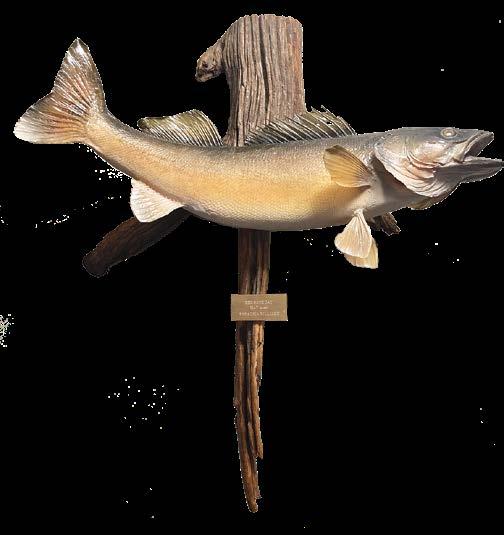
Fishing has made me who I am today and that would not have been possible with out the help of many different people, whether it be getting my first rod or reel from my parents, fishing from the dock with babysitters, getting my first boat from my grandfather, or getting my first fishing sponsorship from Paris Marine.
I am thankful for all of this and so much more, so I do my best everyday to give back to the fishing community. I encourage young people to get involved by giving my time, tackle and knowledge. I take them fishing when I can, and have taken many in their first tournaments. I have created and cherish all of these same memories with my own kids.
Fishing was a gift that was given to me, and I encourage you - if you have been given this gift, pay it forward and keep passing along the gift of fishing.
Thank you, see you on the water and wishing you tight lines!!
Your fishing Guide
Mike Williamswww.williamsoutfitters.com

At Fibrenew, we treat your treasured leather, vinyl, and plastic items as though they were our very own.
Worry not if your favorite leather couch is damaged. When we’re done, it will look like it’s gone back in time to when it was brand new. We’re so confident because Fibrenew’s proprietary solutions deliver satisfaction to our clients every time.
Don’t take our word for it; check out our website to hear from hundreds of ecstatic customers!
Whether your furniture, restaurant booths, boat and more need to be repaired or reupholstered – we are ready and capable to bring back the joy and beauty within your belongings.
Fibrenew is also a completely mobile business. That means we will come straight

Local fishing guide Mike Quenelle is a long-time tournament angler and is the owner/operator of GOAT Angling Adventures. Mike’s goal is not only ensuring his clients catch fish, but also offering “on water instruction” helping anglers of all skill levels improve and ultimately catch more fish!
Mike has extensive knowledge of the Kawartha Lakes and surrounding areas targeting Bass, Walleye, Musky and more. Your guided day on the water in his fully rigger Ranger Bass Boat is sure to be the Greatest Of All Time!
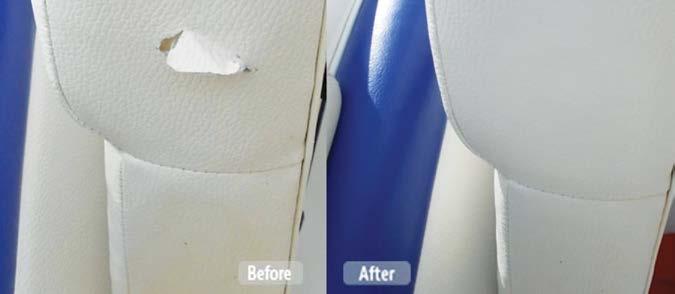
to your front door, no worries! Just reach out to Chris, owner of Fibrenew Ajax, Pickering, and Peterborough to discuss what you need today.
Fibrenew Ajax, Pickering, Peterborough services locations north of Peterborough including, but not limited to : Lakefield, Ennismore, Buckhorn, and Norwood.
Friendly, convenient, and affordable. Get in touch today and let’s breathe new life into your valued leather, plastic, and vinyl items!
Chris Armitage

GOAT Angling Adventures
705-934-1450

www.goatanglingadventures.ca

Williams Outfitters is a Native owned and operated outfitting company that is located on the Curve Lake First Nation. Mike Williams, has had the privilege of learning both traditional and contemporary methods of fishing and his goal is to revive the art of the “Native Guide”. This led him to develop adventure experiences for visitors to the area. Michael promises a comfortable fishing adventure that targets a variety of species as well as sharing his traditional knowledge and fishing secrets of the area.
Williams Outfitters
Mike Williamswww.williamsoutfitters.com

With licence-free fishing days around the corner and National Fishing Week not too far away, I thought this would be an opportune time to share some tips for parents and families wanting to participate in one of Canada’s heritage activities.

Fishing is a relatively inexpensive and highly accessible sport that can be enjoyed by people of all ages and backgrounds. There are numerous benefits associated with this activity: improved patience, communication and mental health, better understanding and appreciation of our natural resources, increased self-esteem, it encourages problem solving and gives families an opportunity to “unplug” and have fun.
No licence, no equipment? No worries! Brand new anglers can give fishing a try at almost no cost during licence-free days: Family Day, Mother’s Day and Father’s Day weekends. Events are held throughout the province and most of them are free or charge a minimal fee to cover costs. They often provide equipment and tackle to those that need it and, best of all, families don’t need fishing licences. Coordinated by the Ontario Federation of Anglers & Hunters (OFAH), Ontario Family Fishing Events (OFFE) is supported by a host of national and provincial outdoors organizations. To find an event in your area, go to: http://www.ontariofamilyfishing.com/
National Fishing Week National Fishing Week (NFW) (June 29 –July 7) offers even more fishing opportunities for Canadian citizens. Licence-free days in Ontario coincide with NFW and again, the OFFE website is your go-to resource for finding events close to home. One of the most helpful (and compact) resources I have come across for anglers is the “Catch Fishing” booklet. Written by the late Rick Amsbury, outdoorsman and former Executive Director of the Canadian National Sportfishing Foundation http://www.csia.ca/, this booklet contains information about picking out a rod and reel, fish care, boat safety and everything in between. It can be ordered for free or downloaded at: www.keepcanadafishing.com/national-fishing-week
An equally valuable resource is the “Learn to Fish” guide, produced by the Ministry of Natural Resources and Forestry. It too is packed with fishing facts and tips on tackle, knots, bait, fishing techniques, casting, safety and so much more. “Learn to Fish” is available at: https://www. ontario.ca/document/learn-to-fish-guide
OFAH TackleShare Program Do you have a child that wants to fish? Do you have a fishing licence but not yet invested in a rod or maybe you forgot your equipment at home? This is where the OFAH TackleShare program can help you out. TackleShare, sponsored by Ontario Power Generation, allows families without fishing equipment to borrow rods, reels and tackle for free and as easily as signing out a library book. They have a number of loaner sites at Ontario Parks,
conservation areas and other community organizations throughout the province as well as a travelling program. www.tackleshare.com
• Leave your rod and reel at home – it’s about the kids having the experience and needing your help – you want them to enjoy themselves and not get discouraged.
• Let the kids be part of the planning – give them simple tasks that they are responsible for.
• Move around – kids have short attention spans – from shore or boat – a change of venue is a good thing.
• A boat ride can be a lot of fun – don’t hurry.
• Size doesn’t matter – pan fish are a lot of fun, easy to find and plentiful.
• Snacks and drinks – make them treats – this will help make the day a special occasion.
• Sunscreen – don’t want anyone to get burnt
• Whistles and lifejackets – from shore or a boat –you need both near the water and make sure everyone knows that blowing the whistle means “I need help”.
• Make the day shorter than longer – make more short trips instead of fewer longer trips.
• Worms work best – they’re effective and very fun to play with when fishing is slow.
• Try a snack that you cook outdoors – either on a portable stove or fire – warm up mac and cheese or a can of beans – cook fries or even some fish - the novelty of the outside meal will make a lasting memory.
• Dress for the weather – being cold is a terrible feeling – if it’s raining too much – call it a day and do it another time – there’s nothing fun about sitting in the rain when you’re just learning about fishing.
• Give the kids your undivided attention – this is quality time for the both of you.
• Bobbers, bobbers and more bobbers – the visual element is good and gives the new angler something to focus on.
• Simple, short rod and reel – don’t use something “they’ll grow into” – give them something they can handle.
• Be patient and have fun!
Ontario Women Anglers provides numerous opportunities to learn and get out on the water. To learn more about our club, please visit: www.ontariowomenanglers.ca


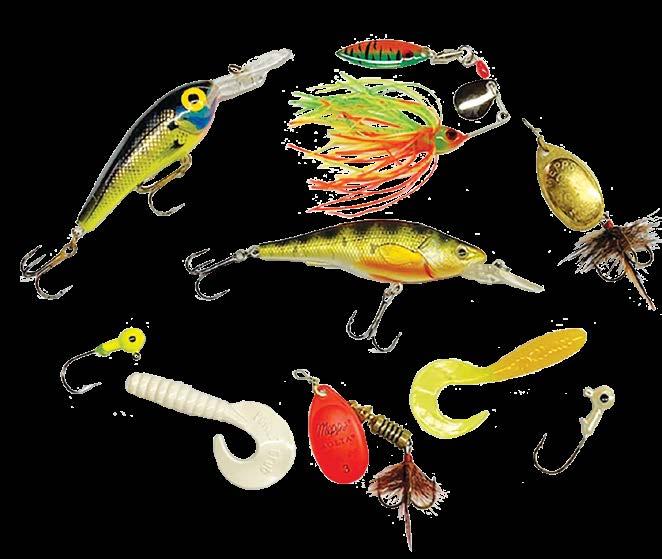
If there is one thing that I could say about our long Ontario winters it's that it makes me appreciate the spring even more. In particular, I look forward to the ice receding from our Kawartha Lakes and the opening of Walleye season.
Walleye are a freshwater fish in the perch family and are a highly sought after game fish. Typically, Kawartha Walleye are gold and olive in colour, with a white belly. Often their backs have five or more black bands or “patches” that fade along their sides. They have two dorsal fins—one spiny and one soft-rayed. Additionally, they have extremely sharp gill plates and a formidable set of teeth so caution must be exercised while handling them.
Early season Walleye fishing offers anglers the best chance of being successful. Cold water temperatures usually keep the fish in relatively shallow water for the first month after opening, eliminating a lot of the guesswork on their location.
Here is my approach when targeting Kawartha Walleye in the spring.
Location is everything
From the opener in mid May until about the second week of June, you will find me fishing for Walleye in what I would consider to be very shallow water. In dirty, muddied or stained water, depths ranging from 3 to 7 feet will hold a large population of hungry Walleye. These fish have just finished spawning and will set up in a “holding” pattern on shallow flats, the edge of drop offs and along channels. In lakes with clearer water, try starting your search a bit deeper.
The Key Three
There are three very simple techniques that I would recommend you use.
A simple ball head jig tipped with a white or yellow twister type plastic grub, a shallow diving crankbait (one that dives from 2 - 5 feet on a steady retrieve) and a small in-line spinner or spinnerbait style lure.

The jig can be cast and “bounced” along the bottom in a yo-yo style retrieve. Strikes will usually occur while the jig is falling to the bottom so pay attention to your line and if it twitches- set the hook.
When fishing crankbaits, I prefer a steady retrieve. I find that it allows the fish more time to line up on the bait and in stained/ dirty water I have had better success using this style of retrieve versus an erratic pause/ pull or jerk.
The most versatile of the 3 techniques are the in-line spinners and spinnerbait style lures. They can be worked slowly near the bottom or retrieved closer to the surface, it all depends on the speed of your retrieve. I also like to use these types of baits when fishing around cover such as stumps, logs and emergent weed growth.
An important thing to remember when utilizing these techniques is that the majority of the lures used are smaller and lighter than those we associate with Bass fishing. For that reason, I usually rely on spinning rods and reels to tackle the task at hand. Medium power rods with fast actions varying in lengths from 6 1⁄2 to 7 1⁄2 feet and spinning reels spooled with 8 to 10 pound braided line check all the boxes. I will add that I like to have a fluorocarbon leader that transitions from the braided line to my lure but often the poor water clarity makes it unnecessary.
For now, I will have to wait a little longer until winter releases me from its icy grip, but you can bet I’ll be chasing those wonderful Walleye soon!
Good luck and get outside!
Mike Quesnelle, GOAT Angling Adventures www.goatanglingadventures.com 705 934-1450
Get ready for the 2024 Kawartha Lakes Country Living Show, a mustvisit event held annually at the Fenelon Falls Community Centre! With over 100 amazing vendors showcasing their goods, there's something for everyone at the show. Don't miss out on the Hello Spring Sale on site, held annually by the Barn and Bunkie, where you can snag some fantastic finds.
Hungry after all that shopping? No worries – there's an onsite restaurant to satisfy your cravings. Plus, get in on the excitement with giveaways and contests throughout the event. Mark your calendars for April 19 from 4pm to 8pm, April 20 from 10am to 5pm, and April 21 from 10am to 3pm at the Fenelon Falls Community Centre. Best of all, admission is free, with donations gladly accepted to support this fantastic community initiative.
A big shoutout to all the sponsors who help make this show a success each year. Not only is it a fun-filled weekend for all attendees, but it's also a key fundraiser for the Fenelon Falls Chamber of Commerce. Consider it the kickoff to summer, inspiring you to tackle all those summer projects waiting on your to-do list. Don't miss out on this fantastic opportunity to support local businesses and get a head start on your seasonal plans!

Mark your calendars and be sure to follow us on social media for more updates as the show planning continues!
https://www.countrylivingshow.ca/

Light and fluffy drop biscuits baked with cheddar, Gruyère and oven-baked ham, then finished with a swipe of honey butter
INGREDIENTS
• 3 C unbleached all-purpose flour
• 1 T baking powder
• 1 tsp baking soda
• ½ tsp kosher salt
• ½ tsp garlic powder
• 1 8 tsp cayenne pepper
• 1½ sticks cold butter (12 tablespoons), frozen
• 1 C sharp cheddar cheese, grated
• ½ C Gruyère, grated
• 1 C cooked ham, finely diced
• 1 T fresh chives, chopped
• 1 T fresh parsley, chopped
• 1½ C buttermilk, cold
For finish:
• 2 T butter, melted

1. Preheat oven to 425°F. Line 2 large baking sheets with parchment paper.
2. Combine flour, baking powder, baking soda, salt, and garlic powder in a large bowl. Whisk to combine.
3. Grate cold butter into bowl and stir with dry ingredients until combined.
4. Add cheeses, ham and fresh herbs and stir to combine.
5. Add the buttermilk little by little, stirring with each addition. Dough should be sticky. Drop small clumps of dough (about 3 tablespoons worth) onto baking sheets, 12 per sheet.
6. Bake trays one at a time for 15 - 20 minutes until biscuits are golden, rotating the pan halfway through the cook time.
7. Once out of the oven, melt honey into melted butter. Give each biscuit a light swipe of the honey-butter mixture using a pastry brush.
6. Cool for 20 minutes (runny) or 40 minutes (slightly runny). Serve with assorted crackers, nuts and fresh fruit.

1. Preheat oven to 425°F. Line a baking tray or pizza pan with parchment paper.
Oven-baked Italian bread filled with layers of thinly sliced cured meats, grilled red peppers, artichokes, cheese and a buttery pesto…
INGREDIENTS
• 1 large focaccia loaf - round or square
• 2 T pesto
• 2 T butter, room temperature
• 1½ pounds cured Italian meats, thinly sliced - mortadella, capoccollo, Calabrese salami
• ¾ pound cheese, sliced - provolone, mozzarella
• 1 C roasted red peppers
• 1 C artichoke hearts, chopped
• ½ small red onion, thinly sliced
2. Cut bread in half, widthwise. Open bread on work surface. Stir butter and pesto together in a small bowl. Divide it between the top and bottom on the bread, smoothing it out evenly across the surfaces.
3. Layer the sandwich on the bottom half of the focaccia, starting with a third of the cold cuts, followed by the red peppers, more cold cuts, red onion, cheese, cold cuts, and top with chopped artichokes.
4. Place top of bread onto sandwich and transfer to the baking tray.
5. Transfer to oven and bake for 15 minutes or until bread is crispy and cheese has melted.
6. Cool for 5 minutes, then slice into wedges and serve with a favourite salad or soup.
As the snow begins to melt and with the vibrant colours of spring just around the corner, it's the perfect time to connect with nature and support local wildlife. Here are our top 5 wildlife-friendly activities to consider this spring:
Native Plant Gardening:
Embrace the beauty of some native plants in your garden. Kawartha Wildlife Centre encourages homeowners to incorporate native species into their landscaping. Native plants provide essential food and habitat for local wildlife, supporting pollinators like bees and butterflies. Consider planting wildflowers, milkweed for monarch butterflies, and berry-bearing shrubs to attract birds and provide forage for insects.
Create a Wildlife-Friendly Water Source:
Installing a bird bath or creating a small pond can be a game-changer for local wildlife. Birds, amphibians, and insects all benefit from a freshwater source, especially during the warmer months. Ensure the water is shallow, with rocks or branches for small animals to perch on, and change the water regularly to prevent mosquito breeding, and give it a good scrub to ensure that algae and pathogens are thoroughly removed.
Mindful Lawn Care Practices:
Opt for wildlife-friendly lawn care by avoiding chemical pesticides and herbicides. Kawartha Wildlife Centre advises homeowners to embrace a more natural approach to lawn maintenance, allowing wildflowers to flourish and providing essential food sources for insects and small mammals. Top dressing with White Clover (a fantastic pollinator friendly plant with deep drought resistant taproots that also adds nitrogen to the soil) is available at most garden nurseries. This not only creates a healthier environment but also supports the entire food chain.

Help local bird populations by constructing nesting boxes for various species. The Kawartha Wildlife Centre suggests placing these boxes in strategic locations, such as on trees or poles, to provide safe and secure nesting spaces. Or even easier? One effective method is the establishment of brush piles, which provide crucial shelter and refuge for various wildlife species. By strategically arranging fallen branches, twigs, and leaves in a designated area, individuals can offer a safe haven for small mammals, reptiles, and birds. These brush piles act as natural shelters, offering protection from predators and adverse weather conditions. Furthermore, they contribute to biodiversity by attracting insects and invertebrates, forming an essential part of the local food chain. Incorporating such features into gardens or green spaces not only enhances the visual appeal but also fosters a harmonious coexistence between humans and wildlife, promoting the overall health and resilience of ecosystems.
Leave the CleanUP to consistent warm weather:
Overwintering insects often seek shelter in leaf litter, mulch, or other protective locations during the colder months. If gardening activities begin too early, disturbing these sheltered areas can expose insects to harsh conditions, reducing their chances of survival. Waiting for consistent warmer weather ensures that overwintering insects have a better chance of emerging safely. These insects are the KEY to the food chain; hungry baby birds need the protein in insects to grow and thrive. Even some birds we think of as nectar feeders (ie. hummingbirds, absolutely depend on readily available insect protein to feed their hungry and growing young). Leave the rake until temperatures are consistently above 10 degrees celsius!
To support wildlife in need, please consider making a donation this season: www.canadahelps.org/en/dn/33851
www.kawarthawildlifecentre.ca Info@KawarthaWildlifeCentre.ca 705-292-9211





As the seasons change, the appearance and behaviour of many animals changes along with it. Caribou, like the ones here at Riverview Park and Zoo, go through some physical and behavioural changes as the temperature rises and spring thaw takes effect.
Through winter, caribou are covered in thick fur to stay warm in cold northern climates. This coat is often light or silver in colour to blend in with snow-covered terrain. Spring molt reveals dark brown fur to match the ground, rocks, and wooded areas. The change in temperature also signals a change in food availability. After feeding primarily on lichen through the winter, using their sensitive nose to find it and specialized hooves to uncover it beneath the snow, caribou search for green vegetation, like new leaves on shrubs, as it starts to appear in early spring.
Another change caribou experience with the seasons has to do with their antlers. Unlike other members of the deer family, both male and female caribou have antlers. In spring and early summer, caribou drop their antlers which will grow again through the summer months. The new antlers are covered in soft velvet, providing blood supply as they grow. This velvet sheds off in late summer and early fall revealing new antlers used for defence and communication within the herd.
As fall sets in and the temperature drops again, this cycle repeats for the caribou as they grow their winter coat and seek out more lichen to feed on through the winter.
Become a part of the Riverview Park and Zoo family by symbolically adopting a caribou. All proceeds support specialized animal care, nutrition programs, enrichment, research, and more. Visit our website www.riverviewparkandzoo.ca/en/index.aspx to adopt or donate.
Mary Kate Whibbs, Riverview Park and ZooSome horses get to stay at the same barn forever, but most do not. Kcees Jedi Knight is one of the lucky few who was foaled at our farm, spent many months travelling across Canada and the United States at trainers, but always landed back at his home, Inukshuk Farm & Equestrian Centre.
It is surprising that the majority of horses have multiple owners and homes during their lifetime. That includes the re-homing statistics on Standardbred horses that indicate 20% are re-homed about three times and that does not include their original breeder/owner/trainers. The troublesome phrase “Unwanted Horse” refers to being no longer wanted by their current owners because they are old, injured, sick, unmanageable, or fail to meet their owner’s expectations.
Like I mentioned above, Kcees Jedi Knight is one of the lucky few. He was foaled in 2005 at Inukshuk Farm & Equestrian, was trailered to Ovid, Michigan as a two year old to be trained and shown by Wadds Quarter Horses. He had a successful first year and returned to his home in Lakefield. On his return to Inukshuk Farm he continued to be shown by his owner for many more years, earning Certificate of Merits in Amateur Showmanship and AQHA Hunter Under Saddle classes as well as winning Ontario Quarter Horse Breeders Futurity in Hunter Under Saddle as a two year old and again as a three year old, as well as many more titles and successes over the years.
Sadly, Kcees Jedi Knight show career was cut short after suffering a pasture accident in 2015. Following consultation with Dr. Kyle Goldie (Gilson’s Equine) and Dr. Bruce Watt (Uxbridge) he was referred to Dr. Darryl Bonder at Toronto Equine Hospital for a hind end nuclear scan. Due to the severity of the injury and unusual presentation, a second opinion was garnered from Dr. Michael Ross at New Bolton Center, PA. He was placed on stall rest for 16 weeks. Overall prognosis for him to return to saddle use was guarded! This year as he turns 19 years young , Jedi still acts like a show horse, looks like a show horse and rides like a show horse, but will never return to 100% soundness.

To keep him safe, he enjoys private turnout, light work and a gentleman’s retirement at Inukshuk Farm. Kcees Jedi Knight will, for his lifetime, remain at his… Home Is Where The Barn is.
Submitted by Janice Ecclestone, Inukshuk Farm www.inukshukfarm.ca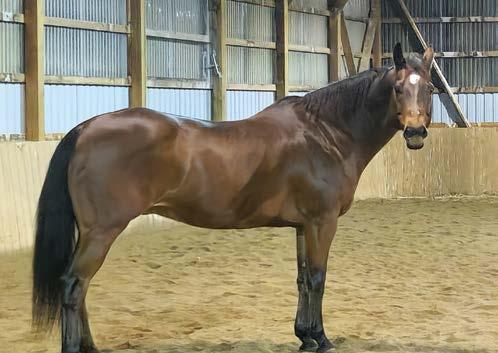




When I think of Easter I immediately think of candy, because what do kids love more than candy? The answer is nothing! One of my personal favourites are jelly beans, which is why I have decided it would be cute to make jewellery with them.
All you need for this activity is some sturdy thread or a thin elastic and a sewing needle.
Tie a generous knot on one end of your string and thread the other end through the sewing needle, now you can begin to string your jelly beans, be gentle, if too much pressure is applied or you string them too fast your jelly beans can crack.
String your jelly beans in any way you want, you could make a pattern or just an array of fun colours. Once you are happy with the length of your jelly bean string tie the two ends together and voilà! You now have jewellery made out of jelly beans.
*Keep in mind you are now styling a very sugary treat, so if you wear it for too long it will get sticky, all the more reason to eat it up fast!

The relative quiet of the winter changes to the sounds of serenading in the spring as our lake edges thaw and creeks and rivers start to flow. As early as late March, you may hear what sounds like a repetitive “peep”, like a phone alarm with no snooze button or a duck-like “quack” or fingernails running over the teeth of a comb. Welcome to the amorous spring calls of cottage country frogs!
A big contributor to the spring frog symphony is the small, but mighty, spring peeper. Weighing in at about 4 grams and fitting on a loonie, choruses of these tiny frogs can reach such a high-pitched crescendo that it makes conversation difficult. Recorded at over 100 decibels, the peeper turns up the volume by inflating a balloon-like sac which amplifies the sound of the air as it is forced over the vocal cords.
With a brown to tan body, a dark cross on its back and tiny toe pads, the spring peeper is difficult to spot but easy to hear. Preferring wetlands like marshes and swamps, the peeper is wary and will go silent upon your approach. Wait patiently and stay still and the calls will start up again filling the air with sound.
If lucky, this single instrument symphony may include the infusion of the duck-like quack of the wood frog. Emerging from its semi-frozen state like a four-legged zombie, the wood frog survives freezing winter temperatures by increasing the amount of glucose in their blood, a natural anti-freeze which protects their cells from rupturing. This adaptation
allows the wood frog to claim the title as the most widely distributed amphibian in Canada, being found as far north as the Arctic tundra.
Returning to the forest pools and marshes where they were born, the mating competition of wood frogs can be fierce. A quacking frenzy is the prelude to a cluster of male suitors seeking out a lone female.
Wood frogs are the most terrestrial of Ontario’s frogs, primarily foraging in forests. Measuring 4-7 centimeters long, the wood frog is brown with a white line under its jaw and a distinctive black face mask making it easy to identify.
Less common, the chorus frog is a thumbsized frog designated as a threatened species under the federal Species at Risk Act. They prefer to breed in small forest pools called vernal pools as these sites are free of predators like fish. However, vernal pools are short lived, so the chorus frog must race against time, needing to quickly complete their metamorphosis from egg to adult. Like the countdown in a James Bond movie, the tadpoles need enough time to develop legs before their breeding pool dries up. A hot, dry spring can spell disaster for this tiny frog!
This preference for breeding in shallow forest pools factors into their population decline. These types of wet landscapes are seen as unproductive and are more likely to be drained and developed.
Slightly bigger than a spring peeper with
by Rick Whittekera light brown to greenish body and three dark, broken lines on their back, the chorus frog’s call has been compared to the sound of running your fingernail along the teeth of a comb adding another musical section to the early spring frog symphony.
As the spring progresses, more frogs, birds and insects will contribute to the sounds of nature, an awakening and vocal celebration of warmer temperatures, increasing daylight and the breeding season. May nature’s calls lighten your mood and put a spring in your step!
Submitted by Rick Whitteker. You can find Rick at home in the forest, as a seasoned trail guide, nature writer and passionate wildlife enthusiast in the Haliburton Highlands.
Frog photo credit - Ed Poropat



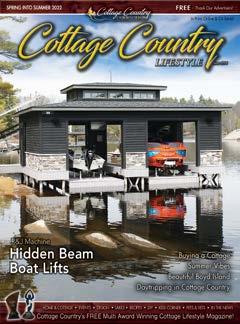


Havelock changes as the seasons turn from winter to summer. The population more than doubles when the cottagers and tourists start arriving in the spring. Snowmobiling, ice fishing and winter hikes on snowshoes or cross-country skis all have their fans, but lazy days at the cottage; along with fishing under the sun from a dock, canoe, or motorboat are big draws to the area. And it’s no wonder when you think of the fantastic array of lakes and natural scenery. What do all of those summer residents do when they are not lounging at the cottage? There’s plenty to pique their interest locally, and some new offerings. Havelock welcomes Kawartha Adventure Resort into the community. Just north of the town, with 10 overnight ensuite guest rooms, lakefront water activities, a trail network and a BBQ area, you can enjoy the cottage experience without the work.
If you are looking for something a little more relaxing, the Belmont Spiritual Health and Wellness Centre on George St. offers yoga, spa services, fitness coaching and more. Across the street take in the unique offerings of StemZ N GemZ. Looking for something for the younger members of the family? Check out the new splash pad located at the Community Centre Park.
Behind the Community Centre, you’ll find the entrance to the Mathison Conservation Area, a 250-acre natural vista of forest and wetlands with walking trails. On Fridays, visit the Havelock Farmers and Artisans Market. Around the corner is the Wild Flower Bakery, with its artisanal baking. Also new to Havelock, on the east end of the village is Town N’ Country Plaza, newly renovated with a unique selection of vendors. And remember to visit the Tourist Info Kiosk, by the Yellow Caboose on Highway 7.
www.havelockchamber.org
Under a veil of water, In the mud and the ooze, A strange creature lurks, A strange creature moves. You may think it’s an alien from some other place, But it has been here longer than our human race.
Jacob Rodenburg
Ever think about what lives in the slime and the ooze of your nearby pond? It may seem like there isn’t a lot going on down in that muddy underworld — just some mud, plants and a few frogs. But you’d be surprised!
If you want to experience the alien next door, fetch a net, a white bucket, tweezers, some rubber boots, and if you have one, a magnifying glass. Visit a nearby pond. Choose one that has a shallow area with a muddy bottom. Make sure the kids are closely supervised. Scoop up a healthy glob of mud and using your fingers (or a stick), carefully sift through the gooey mass. You can also try sweeping your net through the plant roots. Soon enough, you’ll spot something wriggling. Using the tweezers, remove the wriggler and rinse it in clean water and place this in the white bucket. Continue and repeat.
Chances are you’ll have discovered the amazing underwater, jaw-thrusting, jet-propelled bug snatcher! What on earth? While it may seem otherworldly, what you’ve captured is not some alien, but a baby dragonfly! Baby dragonflies start out their life as nymphs (the larvae stage) and depending on the species, they can live underwater for one to several years. And what hunters they are! They suck water in through their mouth and expel it out their rear end, surging forward like a jet fighter. Baby dragonflies have a folding lower jaw complete with a set of pincers that can thrust outward to seize their prey. They have been known to eat tadpoles, small bugs and even minnows. Want to see for yourself? Using the tweezers, you can gently unfold the lower jaw or labium by pulling it outward. You’ll notice the curved pincers on either end of the jaw. While you are at it, use your magnifying glass and look along the rear of their stomach or abdomen. Watch how the abdomen moves in and out, as the baby dragonfly extracts oxygen from the surrounding water.
A baby dragonfly sheds its exoskeleton or skin as it grows. And when it is ready to change from an underwater critter to the acrobatic flying adult dragonfly with which we are all familiar, the nymph will crawl right out of the water onto an overhanging branch or cattail. Slowly, the dragonfly will slip out of a split along its back and unfurl two pairs of brand new wings. If you are lucky, you can find empty skeleton cases near the edge of a pond. These exuviae are a wonderful treasure to add to your nature table.
Like the babies, adult dragonflies are voracious hunters. One dragonfly can devour up to 100 mosquitoes each day. And boy, are they fast! A dragonfly can zip along at speeds of almost 50 kilometres per hour, faster than Usain Bolt can run. And with their four independently moving wings, they can fly forward, backward, sideways, even straight up and down. Most dragonfly species catch their prey under their thorax (or mid-section), trapping them with special curved spines running along the inside of each leg.
Look deep into a dragonfly’s eyes and you’ll literally be staring back in time. They are among the oldest insects on earth. More than 300 hundred million years ago, giant dragonflies with wing spans of more than two feet wide cruised among the ancient ferns. They became so large, scientists believe, because there were much higher levels of oxygen in the atmosphere. And talk about hunting eyes! With up to 30,000 individual lenses in each eye, dragonflies have incredible vision. Their bulging eyes can detect movement up, down, to the side and even behind them.
Submitted by Jacob Rodenburg, Author & Executive Director of Camp Kawartha, an award-winning outdoor education centre and summer camp.
Easter is early this year so it might be a snowy day when the Easter Bunny comes to Fenelon Falls for our annual Easter Eggstravaganza event. This free, family event is the perfect opportunity to get out and have some fun so we invite you to join in all the great activities on Saturday, March 30th. Every child receives a goody bag and more as they visit the participating downtown businesses.
April 19th to 21st marks the return of the Kawartha Lakes Country Living Show, hosted by the Fenelon Falls & District Chamber of Commerce. This premiere event brings together vendors, community groups, and makers from Kawartha Lakes and beyond. If you’re new to the area it’s the perfect place to meet new people, join a local community organization and find just the right service providers for your home and cottage needs. Stop by the show for a great meal at the onsite restaurant or a visit with friends and neighbours. There’s something for all ages and interests! Plan your visit at www.countrylivingshow.ca.
Fenelon Falls turns 150 this year and we’re celebrating all year long at Chamber of Commerce and community events. Limited edition merchandise will be available at local shops and events. Learn about our local history in special articles in our weekly newsletter the Town Crier. It’s free to subscribe and it’s a great way to stay connected with Fenelon Falls.
Are you a interested in opening a business in Fenelon Falls? The Chamber of Commerce Office is open Monday to Friday from 10 am to 4 pm. We’re here to answer your questions and connect you with the right partners to help you be successful.
To find out more about Fenelon Falls; our businesses, attractions, event and opportunities please visit www.explorefenelonfalls.com or call Marylee at (705)887-3409.

It is full steam ahead with the Summit Wellness Centre! The historic train station has been braced and moved off of its crumbling foundation and the entire lower level of the SWC has now been excavated. Footings are in and foundations are almost complete, ready for the train station to be moved back to its new foundation this spring. Then we will start to see the new building structure come to life over the coming year!
If you would like to help the communities purchase the needed equipment for the SWC, thank you! The easiest way to donate is at www.canadahelps.org and search for "Summit Wellness Centre". If you would like more information about the project, please feel free to reach out to Jennifer at jwilson@coboconknorland. ca we'd love to hear from you!
With the snow finally melting away it’s time to get ready for another amazing busy season here at the Lakes. The Coboconk, Norland and Area Chamber is preparing for the Fresh Water Summit Festival, a free family friendly event on June 15th 2024 here in Coboconk’s Lions Park. We invite you to bring the kids, and come down for a day of free activities, vendors and more. It is an amazing way to profile your business, through sponsorship or participating on the day of the event as well! The Chamber has been working hard to find new dynamic ways to engage and attract members. In addition to our annual community directory we will be adding digital advertising, new member events and a Chamber podcast to the long and growing list of benefits to being a member, giving more reasons than ever to join our Chamber and support more than the local businesses, support the whole community.
www.coboconknorland.ca


The Bobcaygeon and Area Chamber of Commerce is excited to be moving to a new location! As of February 26th the Bobcaygeon Service Ontario office and the Chamber will be moving to 123 East St. S. Bobcaygeon. This new location is centrally located and will be much more visible to the community and visitors. This is a great time to join the Chamber!
• Member business cards and promotional material displayed in the Chamber and Service Ontario Office premier location
• Be informed first about the City of Kawartha Lakes financial and business programs
• Summer Tourism Ambassadors to promote your business to visitors
• Discounts and benefits to members of the Chamber of Commerce
• Employee Benefits plan exclusive to Chamber members through K. Brewer Financial Services Inc.
• Your business contact information included in Explore Bobcaygeon printed publication with a 15K circulation
• Promotion of local businesses to residents and visitors
• Partnering with other groups and organizations to work together on joint initiatives and events
• Your business featured on our social media platforms and be linked to www.bobcaygeon.org
• Your business included in the Bobcaygeon and Area Chamber of Commerce mailed out tri-fold
• Professional Development Seminars
• Networking events with other chamber members
• Targeted members email blasts
• Connect with the Chamber on Facebook at Bobcaygeon Chamber of Commerce and members only through Bobcaygeon Chamber
The town of Bobcaygeon is busy preparing for the Welcome Back Summer event taking place in and around Bobcaygeon on June 8th. This family friendly event will be full of activities and a great chance to play, stay, shop and dine in beautiful Bobcaygeon.
If you need information or are interested in joining the Chamber please call 705-738-2202 or email us at manager.chamber@bobcaygeon. org or visit our website at www.bobcaygeon.org

